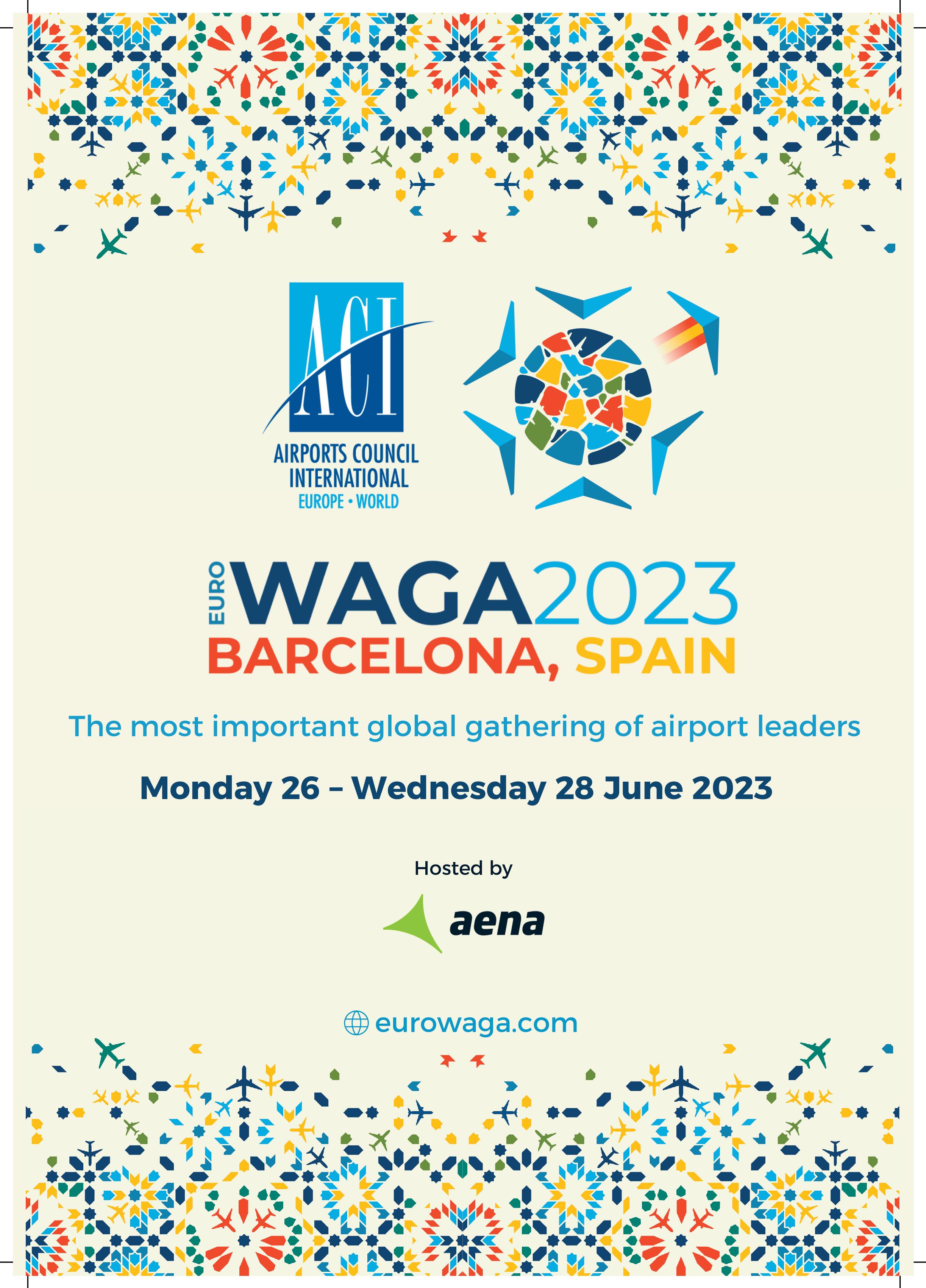Focus on: Africa
Airport profile: Dallas/Fort Worth
Special report: Small airports
Plus: Green concessions & China traffic analysis

Focus on: Africa
Airport profile: Dallas/Fort Worth
Special report: Small airports
Plus: Green concessions & China traffic analysis

Leading airport managers are not only focused on current recovery but also how to redesign and manage the airports for the next century. And technology and location intelligence will be key to that success. Esri geographic information system (GIS) technology gives you the power to


• Better design and manage the construction of new facilities.
• Better manage and maintain terminal and airside assets.
• Improve performance and efficiency.
• Enhance customer safety and experience.
• Optimize your financial performance.
Take the next step with Esri’s GIS. Explore go.esri.com/esri-airports-brochure-2022.
Editor
Joe Bates +44 (0)1276 476582 joe@airport-world.com
Design, Layout & Production
Mark Draper +44 (0)208 707 2743 mark@airport-world.com
Sales Directors
Jonathan Lee +44 (0)208 707 2743 jonathan@airport-world.com
Jon Sissons +44 (0)208 707 2743 jon.sissons@airport-world.com
Advertising Manager
Andrew Hazell +44 (0)208 384 0206 andrewh@airport-world.com
Subscriptions subscriptions@aviationmedia.aero
Managing Director
Jonathan Lee +44 (0)208 707 2743 jonathan@aviationmedia.aero
Published by Aviation Media Ltd PO BOX 448, Feltham, TW13 9EA, UK
Website www.airport-world.com
AirportWorld is published six times a year for the members of ACI World. The opinions and views expressed in AirportWorld are those of the authors and do not necessarily reflect an ACI World policy or position.
ISSN: 1360-4341
The content of this publication is copyright of Aviation Media Ltd and should not be copied or stored without the express permission of the publisher.
Despite the World Health Organization's recent reminder that the COVID-19 pandemic is still a global health emergency, its once paralysing impact on the planet is effectively over, and the aviation industry can look forward to the year ahead with growing confidence.
Across the globe airports are growing their workforces, hiring new staff and replacing those that left the industry during the pandemic to better equip themselves to cope with current demand and the expected upturn in traffic in 2023.
Indeed, ACI World forecasts that global passenger numbers will return to and possibly surpass pre-pandemic levels by the end of 2023, so international travel is 100% back on the agenda.
And with overseas journeys now largely being free of travel restrictions and the threat of enforced periods of quarantine, international aviation conferences we can all attend are back in force this year with the 2023 events calendar including the most in-person ACI World events since 2019.
They include this summer's joint ACI EUROPE/ WORLD Annual General Assembly, Conference & Exhibition (WAGA) in the beautiful city of Barcelona (June 26-28); the ACI Customer Experience Global Summit in Incheon (September 4-7); and new Airports Innovate conference in Muscat (November 21-23).
You can see exactly what's in store, and when, on our events map in the newly restored ACI news pages of this issue. The section (pages 10-12) now leads with news from ACI World and includes input from the ACI regions, this issue including updates from ACI EUROPE and ACI Asia-Pacific.
This year will also see the introduction of a new 'hospitality' column, which will focus on customer service innovation and the news and views of hospitality providers ranging from airport lounges, hotels and meet & greet teams to retail and F&B concessionaires.
Another way we will be doing things slightly differently in 2023 is that we have decided to produce a mix of print and digital only issues this year to
better serve our readers who prefer to view stories online and receive a PDF of the magazine, and lessen our impact on the environment by printing and globally mailing significantly fewer copies.
As a result, this issue along with the March/ April, July/August and November/December editions will be 100% digital and this year's only print issues of AirportWorld will be the ones we produce for WAGA in Barcelona (May/June) and Airports Innovate (September/October).
We have decided to make 'Africa' the theme of our first issue of 2023 to coincide with the 69th ACI Africa Board & Committee Meetings, Regional Conference & Exhibition being held in Kigali, Rwanda, between February 25 and March 3.
ACI Africa's secretary general, Ali Tounsi, introduces the Africa section of the magazine by telling us more about some of the main challenges and opportunities facing Africa's aviation industry and outlining the goals and ambitions of ACI Africa for the year ahead.
The themed section also shines the spotlight on TAV Airports' investment strategy in Africa; the African airport portfolio of Egis; and the potential for commercial/real estate developments at and around African airports.
Elsewhere in the issue, we are reminded about the economic challenges facing small airports and how enhancing customer service can boost revenues; consider why airports should implement 'green concessions' programmes; and analyse the impact of China's re-opening to international travel.
Our main airport feature is on Dallas/Fort Worth International Airport (DFW), where executive vice president of global strategy and development, John Ackerman, updates us on the growth and development plans of the Texas gateway.
We round out the issue with the thoughts of ACI World director general, Luis Felipe de Oliveira; ‘hospitality’ and ‘people matters’ columns; and a bumper four page review of the latest World Business Partner (WBP) news. All make for a cracking start to 2023, I hope you agree!

Airport World editor, Joe Bates, looks forward to a more positive year for aviation, introduces some exciting changes to the magazine, and reflects on the 'Africa' theme of this issue.



We
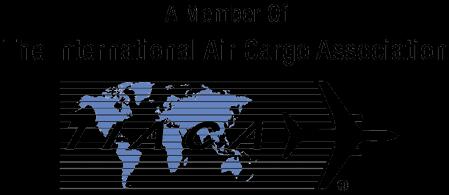
Airport World editor, Joe Bates, looks forward to a more positive year for aviation, introduces some exciting changes to the magazine, and reflects on the 'Africa' theme of this issue.
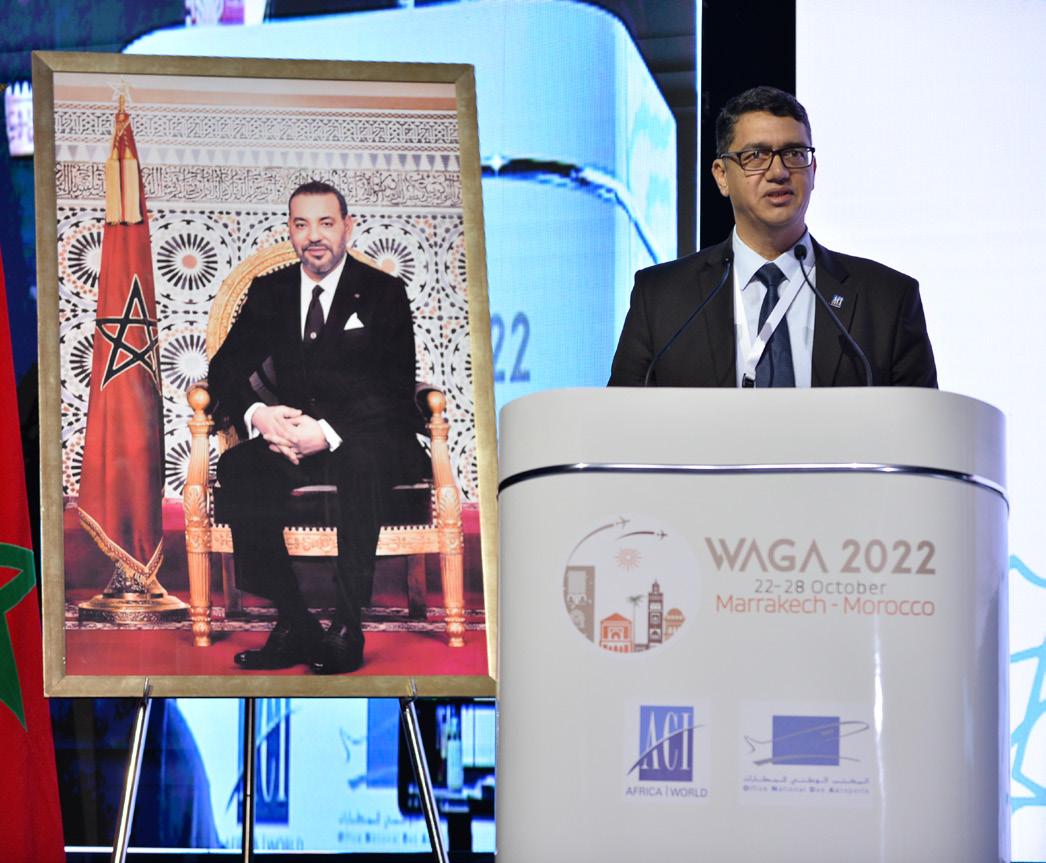

ACI World director general, Luis Felipe de Oliveira, considers the growth potential of Africa.

ACI news is back, rounding up the latest announcements, initiatives and views from ACI World and across the ACI regions, this issue also featuring input from ACI EUROPE and ACI Asia-Pacific.
Dallas/Fort Worth International Airport's executive vice president of global strategy and development, John Ackerman, tells Joe Bates about the growth and future development plans of the Texas gateway.
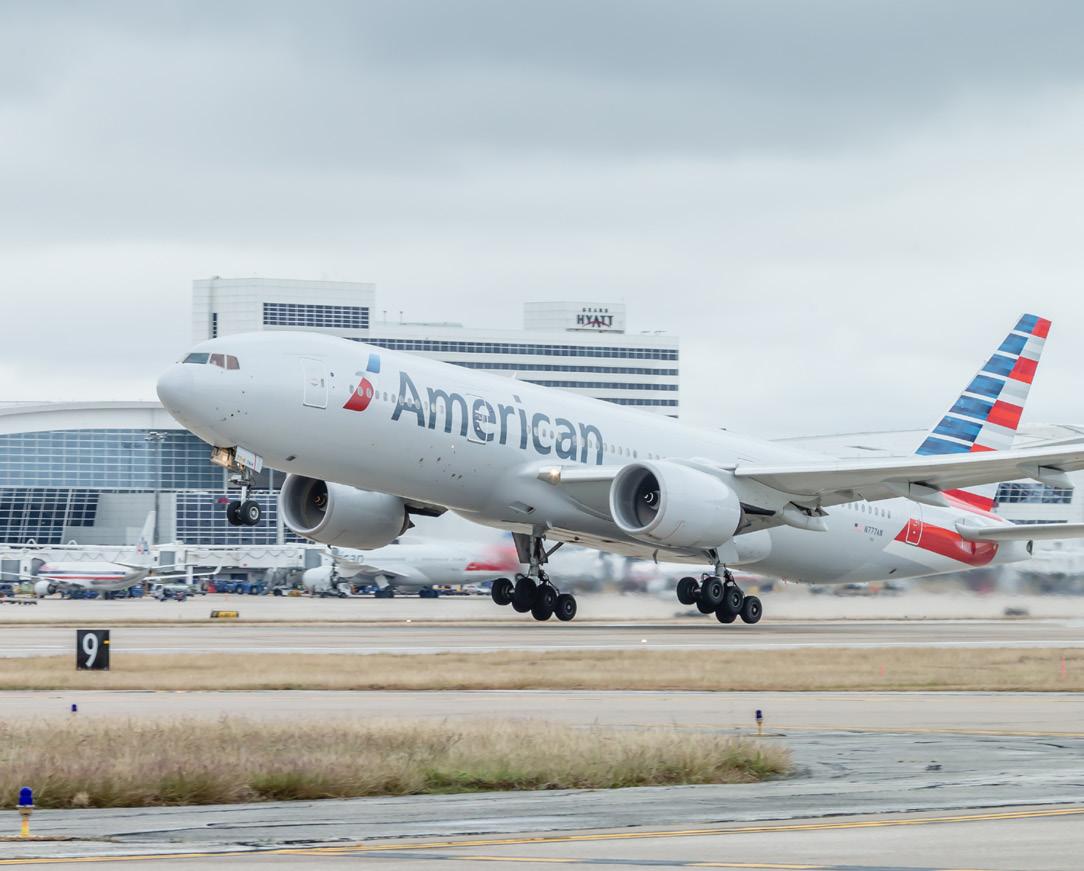
ACI Africa secretary general, Ali Tounsi, considers some of the main challenges and opportunities facing Africa's aviation industry and tells us more about the goals and ambitions of ACI Africa for the year ahead.
Executive board member and chairman of the executive committee, Franck Mereyde, explains why ever expanding TAV Airports is eyeing new opportunities in Africa.
Real estate development could act as the catalyst for the successful future development of many African airports, writes NACO's aviation director for Africa, Marcel Langeslag.
Airport World talks to Olivier Baric, Egis' aviation director for Africa, about the infrastructure specialist's interests in Africa, potential challenges ahead, and why he believes that long-term partnerships are key to delivering on airport promises.
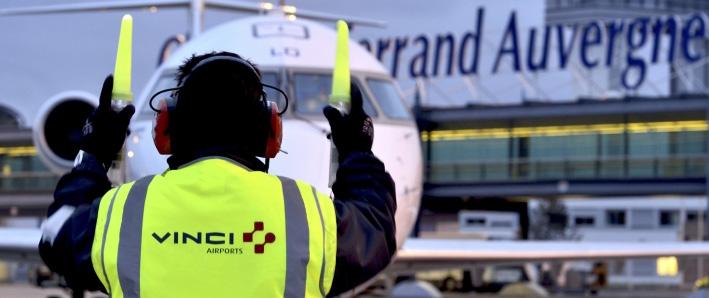
ACI World's vice president and chief economist, Patrick Lucas, and vice president for airport customer experience, Dimitri Coll, remind us of the economic challenges facing small airports and how enhancing customer service can boost revenues.
ICF's vice president, Eliot Lees, and senior consultant, Tod Yankee, consider the reasons why airports should implement green concessions programmes.

China's re-opening to international travel is likely to be more of a slow burner than a game changer for the aviation industry, writes OAG's chief analyst, John Grant.
Gilles Bussutil, vice president, global guest experience, at airport lounge and travel experience provider, Airport Dimensions, explores the concept of hospitality and what it means in the airport environment.
The latest news and views from ACI’s World Business Partners.
Dr Richard Plenty and Terri Morrissey reflect on the recruitment challenges facing airports and the potential benefits of bringing back older, more experienced staff.
Director General
Luis Felipe de Oliveira (Montréal, Canada)
Chair
Aimen Al Hosni (Muscat, Oman)
Vice Chair
Candace McGraw (Cincinnati, USA)
Immediate Past Chair
Martin Eurnekián (Buenos Aires, Argentina)
Treasurer
Arnaud Feist (Brussels, Belgium)
ACI WORLD GOVERNING BOARD
DIRECTORS
Africa (3)
Emanuel Chaves (Maputo, Mozambique)
Fabrice Grondin (Saint-Denis, Réunion)
Capt Rabiu Hamisu Yadudu (Lagos, Nigeria)
Asia-Pacific (9)
Aimen Al-Hosni (Muscat, Oman)
Mohamed Yousif Al-Binfalah (Bahrain)
Geoff Culbert (Sydney, Australia)
SGK Kishore (Hyderabad, India)
Seow Hiang Lee (Singapore)
Emmanuel Menanteau (Paris, France)
Nitinai Sirismatthakarn (Bangkok, Thailand)
Akihiko Tamura (Tokyo, Japan)
1 Vacancy
Europe (7)
Arnaud Feist (Brussels, Belgium)
Jost Lammers (Munich, Germany)
Javier Marin (Madrid, Spain)
Yiannis Paraschis (Athens, Greece)
Kadri Samsunlu (Istanbul, Turkey)
Stefan Schulte (Frankfurt, Germany)
Nazareno Ventola (Bologna, Italy)
Latin America & Caribbean (3)
Ezequiel Barrenechea (Guayaquil, Ecuador)
Mónica Infante (Santo Domingo, Dominican Republic)
Juan José Salmón (Lima, Peru)
North America (6)
Kevin Dolliole (New Orleans, USA)
Deborah Flint (Toronto, Canada)
Joseph Lopano (Tampa, USA)
Candace McGraw (Cincinnati, USA)
Sam Samaddar (Kelowna, Canada)
Roelof-Jan Steenstra (Toronto, Canada)
Regional Advisers to the World Governing Board (10)
Lew Bleiweis (Asheville, USA)
David Ciceo (Cluj-Napoca, Romania)
Alex Gitari (Nairobi, Kenya)
Fred Lam (Hong Kong)
Tan Sri Bashir Ahmad Abdul Majid (Delhi, India)
Mpumi Mpofu (Johannesburg, South Africa)
Andrew O’Brian (Washington DC, USA)
Jorge Rosillo (Galapagos, Ecuador)
Brian Ryks (Minneapolis-St Paul, USA)
1 Vacancy
WBP Observer
Esperanza Morales Martin (Global Exchange)
Correct as of February 2023


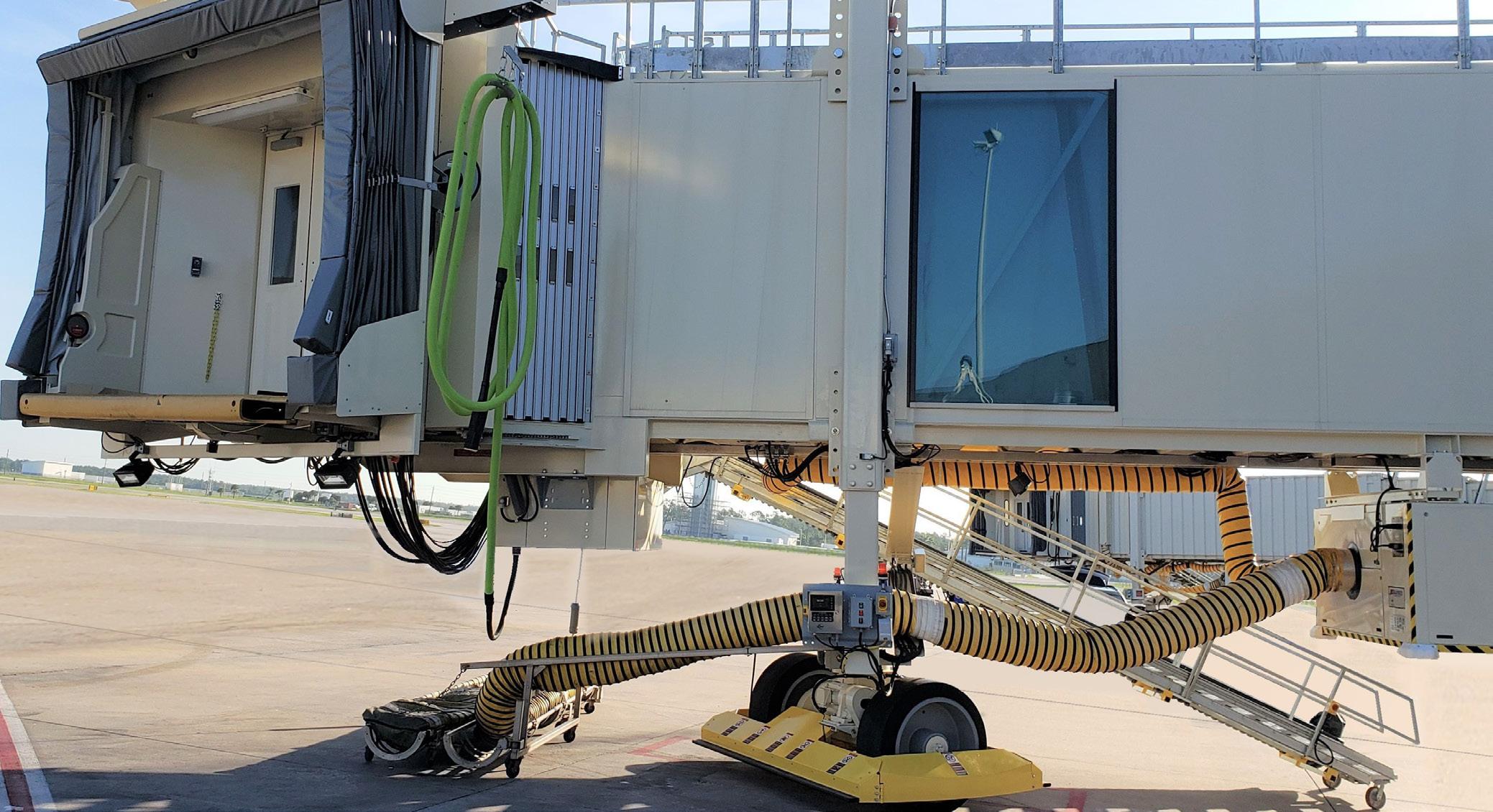

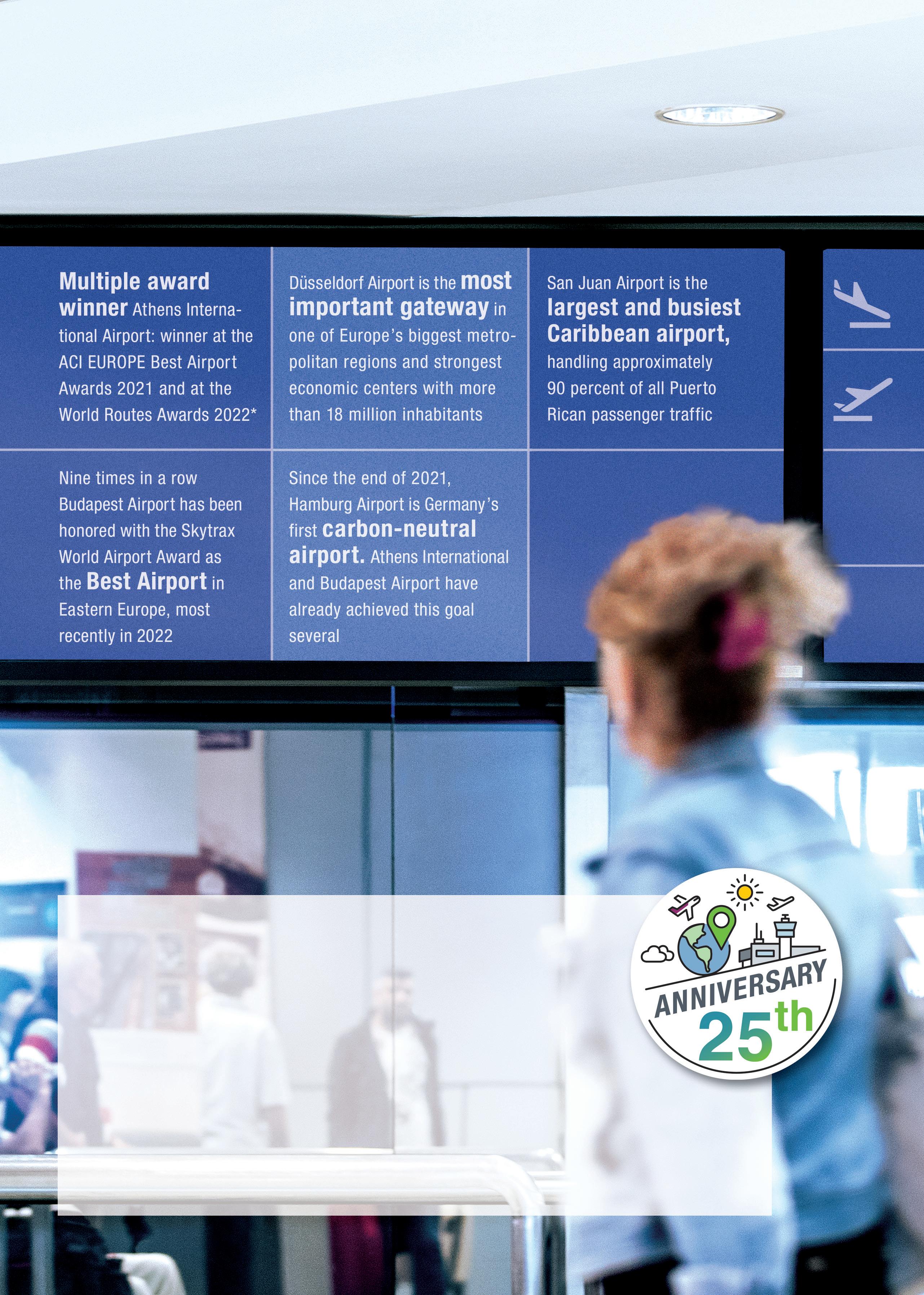

As many of you will know, ACI World had the pleasure of partnering with ACI Africa for the ACI Africa/World Annual General Assembly, Conference and Exhibition last October. The successful event, which attracted over 500 delegates, took place in Marrakesh, Morocco, and was generously hosted by Morocco's Office National Des Aéroports (ONDA).
ACI World will also have the pleasure of returning to the region at the end of February for the 69th ACI Africa Board and Committee Meetings, Regional Conference and Exhibition. Such in-person meetings are vital to the strengthening of relationships and the exchange of knowledge needed to build a sustainable aviation ecosystem.
To many, the African continent represents huge potential for the growth of aviation. With a population of nearly 1.4 billion people, Africa makes up about 17% of the world’s population. Indeed, the United Nations states that Africa is the fastest-growing continent and will host more than half of global population growth between now and 2050.
Due to Africa’s challenges such as weak infrastructure, poor connectivity, lack of liberalisation, high taxes and many 'aeropolitical' restrictions among others, ACI data shows that the region accounted for only 2.5% of the world’s passengers in 2021.
Nevertheless, in 2018, air transport supported 7.7 million jobs and $63 billion in African economic activity, representing 2.2% of all employment and 2.7% of all GDP in African countries.
These benefits have the potential to return and flourish under the right conditions.
According to the latest ACI World quarterly traffic update, passenger traffic in Africa has shown recovery from 114.8 million (50.1% of 2019 level) to 178.6 million in 2022 (77.9% of 2019 level). However, with continued reliance on international travel, Africa continues to be vulnerable to external shocks. That said, a recovery is still expected by 2024 for the continent.
Looking to the future, ACI World’s just released World Airport Traffic Forecasts 2022–2041 (WATF) states that Africa’s passenger traffic, compared to its 2022 volume, is set to almost triple by 2041 based on a compound annual growth rate of 5.7%. To capitalise, and perhaps exceed this growth, Africa needs a strong, efficient yet competitive air transport sector, with resistant business models leading the way.
Given Africa’s environment, the ACI Policy Brief on airport networks shows that the Airport Network model is the coping mechanism of choice with practically all (99%) African airports belonging to a network where costs and revenue are pooled. In contrast, 55% of airports worldwide, serving 42% of traffic, belong to a network structure.
The key advantage for smaller airports within an airport network is that they have access to resources that they would not
have otherwise if they were operated and managed separately as individual entities.
Airports in a network benefit from economies of scope and scale that generate efficiencies in terms of costs and charges. The efficiency gains in operating costs and capital costs more than offset cross-subsidies and generate value for airlines and passengers using airport networks. And in addition to this, the network approach facilitates the sharing of best practices, such as in customer experience.
Of course, the emergence of a more open and less fragmented 'African sky' will be essential to supporting the development of air transport on the continent. The liberalisation and competition across all sectors of air transport is vital to enabling access to new markets within and outside the vast region.
The growing commitment to a common aviation market has the potential to alleviate existing regulatory constraints, enhance consumer choice, enhance competition across the air transport value chain and augment connectivity on the continent.

Aviation in Africa is also challenged by excessive regulation and taxes. From an end-user perspective, there is often little difference between charges, taxes and government fees as they are seen as additional charges to be paid when purchasing a ticket.
However, there is a significant difference in the way these levies are applied to the development of air transport and airport infrastructure in particular.
It is the responsibility of governments and industry to not only invest in airports and travel, but in tourism, which all play a vital role in delivering socio-economic benefits to African economies at large. All the above-mentioned elements are needed to develop international and domestic air service demand on the continent –and always for the benefit of travellers and communities.
ACI news is back, rounding up the latest announcements, initiatives and views from ACI World and across the ACI regions, this issue also featuring input from ACI EUROPE and ACI Asia-Pacific.
for increased collaboration between stakeholders in creating value for the travelling public and communities.
“This should not be a zero-sum game,” stated de Oliveira. “Like airlines and other aviation stakeholders, airports are businesses that continue to be affected by the pandemic’s economic impact, energy costs, staff shortages, and other inflationary pressures felt by the entire industry.
ACI World is urging regulators to support the economic sustainability of airports as social and economic engines of communities worldwide and for the benefit of the travelling public.
The call to action supports the recent ACI World Resolution Restoring Economic Equilibrium that urges governments to acknowledge the changed risk profile of airports in some jurisdictions due to the pandemic and to provide regulatory support to restore economic equilibrium for unrecovered costs, either as financial compensation or through future airport charges.
It also follows the recent outcomes of the Economic Commission of the International Civil Aviation Organization (ICAO) that recognised the need for the ongoing review of ICAO’s Policies on Charges for Airports and Air Navigation Services (Doc 9082).
ACI World director general, Luis Felipe de Oliveira, said: “It is vital that international and national regulators support the economic sustainability of airports as crucial players in the health of the entire aviation ecosystem.
"Restoring the economic equilibrium of airports through financial compensation or through future airport charges is necessary for investing in the infrastructure needed to accommodate the growth of air travel and meet decarbonisation targets, as well as maximise airports’ contribution to the United Nations’ Sustainable Development Goals and wider socio-economic effects.”
The impact of the COVID-19 pandemic on airport passenger traffic resulted in a global decline of 61% in 2020 relative to 2019 (falling from 9.2 billion passengers in 2019, to 3.6 billion passengers in 2020).
The lasting effects on revenues in the years following the collapse has resulted in capital expenditure reductions. Furthermore, where government financial support or other relief measures were insufficient, many airports also had to re-finance their operations, creating a mounting debt burden.
A recent report by IATA states that both airports and airlines have the weakest economic performance among all sectors in aviation and all major global industries, underlining the need
"However, what is unique to airports is that they face high fixed costs irrespective of economic conditions and do not have the same level of flexibility in managing capacity. With continued economic headwinds and global passenger traffic expecting a loss of 27% in 2022 as compared to 2019, a balance must be struck in order to restore the economic equilibrium of airports.
“Under a regulated regime of airport charges that do not adjust to actual market and demand conditions, there should be full awareness of the fact that the regulated formula that protects airlines in good times also requires protecting airports in bad times.

"This regulatory asymmetry needs full consideration and reconciliation in the post-pandemic recovery. This means that costs incurred for aeronautical services through the pandemic need to be recovered through charges and fees, especially in cases where government financial support was insufficient to cover those costs. In other words, there is currently a mismatch between costs incurred and revenues that need to cover those costs.”
InterVISTAS research provides in-depth evidence that supports the need for a shift towards light-handed airport charging models. The observed data shows that the direct cost of airport charges (levied on both passengers and airlines) to consumers is small in terms of the final ticket price, including airline ancillary charges.
Independently of the small impact of airport charges, industry indices of air fares show the significant percentage increases of double-digit proportions in 2021 and 2022 as compared to previous years. The drivers in the increases in air fares is largely a function of rises in the major cost items such as jet fuel and personnel costs, but also airlines’ ability to adjust pricing based on demand patterns aimed at improving economic performance.
Like airlines, ACI World advocates that new approaches for economic oversight should be considered to ensure better use of airport capacity through flexible pricing, the fostering of infrastructure development for connectivity, achieving decarbonisation targets, maximising socio-economic benefits, and providing charges incentives to address issues of congestion, noise, and climate change impacts.
All such advantages encourage the growth of a sustainable aviation ecosystem for the benefit of travellers and communities in all regions.
ACI EUROPE president, Javier Marín, has addressed the specific challenge of the funding required to achieve the airport industry’s net zero carbon targets and compliance with 'Fit for 55'.
Speaking at ACI EUROPE’s annual reception held in the European Parliament in Brussels, Marín, who is managing director of Spanish airport operator AENA, warned of the huge potential impact on the connectivity of regional airports given significant cost increases on intra-European routes.

He specifically referenced the imbalance in financial support for decarbonisation between the EU and the US – as laid bare by the recently adopted US Inflation Reduction Act.
“It’s clear that more support mechanisms and more incentives should be put in place. In other words, we need not just sticks from the EU but also carrots," stated Marín.
"The current debate on how the EU should react to the US Inflation Reduction Act and its $370 billion subsidies makes that very clear well beyond our sector. In this regard it is essential that aviation be eligible for further support under the initiatives and instruments currently being devised by the Commission to keep pace with the US."
Marín described an industry moving into 2023 with the fragility and volatility of financial recovery remaining a deep concern.
“Costs have increased with the hire of additional staff to handle peak hours and airports’ energy bills have exploded," he noted. "Several major airlines posted record profits in the fourth quarter of 2022. This was not the case for airports… many are still struggling to reflect inflationary pressures in their charges."
He also called for a passenger-centric approach to underpin regulatory decision making, ensuring that industry commitment to excellence and a desire to invest is matched by regulatory support.
“Airports are not bus sheds," mused Marín. “They are one of the most regulated, complex and expensive modern infrastructures to run. We need regulators to put the passenger at the centre of airport regulation.
"Passengers expect a high-quality experience at the airport. This means airports must have the financial health to fund operations that are resilient.
"Airports need visibility on future income to proceed with investments that meet not just the interests of passengers but also increasingly of our planet. To regulators we say: ensure that your decisions focus on long-term passenger interest, and not short-term airline costs."
Following China’s decision to reopen its border with quarantine-free travel, ACI Asia-Pacific has reiterated its call for a consistent and harmonised approach from governments in their response measures towards managing inbound international travel.
Commenting on the development, ACI Asia-Pacific's director general, Stefano Baronci, said: “China has played a dominating role in the region’s economy and is anticipated to be one of the most vibrant aviation markets, contributing 16% of the global traffic by 2040.
"The decision to reopen borders is long awaited. China is a significant contributor to tourism in the region and the re-opening of the borders will be a huge boost for the industry as well as the economy of the region.”
China was the last major economy in the world to reopen borders after three years of lockdowns in accordance with its Zero-COVID strategy.
“The opening of Chinese borders completes the process of normalisation of freedom of movement of international passengers in the region that has already witnessed relaxation of travel protocols during the second half of 2022,” commented Baronci.
In order to ensure the smooth recovery of air traffic, ACI believes that co-operation and the establishment of standards that harmonise the processes for international travel between states are crucial.
Baronci said: “The latest introduction of inbound travel protocols in India and Japan confirms the need to improve the co-ordination of travel restrictions amongst States that should strengthen their dialogue for co-ordinated prevention, preparedness and response planning with the involvement of the aviation industry and more effective and aligned decision making for travel regimes.”
2023
September 30-October 3
ACI North America Annual Conference & Exhibition
Long Beach, CA, USA
2023
June 26-28
ACI EUROPE/WORLD Annual General Assembly, Conference & Exhibition Barcelona, Spain
2023
February 25-March 3
ACI Africa Board & Committee Meetings, Regional Conference & Exhibition Kigali, Rwanda
ACI World
Luis Felipe de Oliveira
Director General
PO Box 302
800 Rue du Square Victoria
Montreal, Quebec H4Z 1G8 Canada
Tel: +1 514 373 1200
Fax: +1 514 373 1201
aci@aci.aero
www.aci.aero
ACI Africa
Ali Tounsi
Secretary General
Casablanca, Morocco
Tel: +212 660 156 916 atounsi@aci-africa.aero www.aci-africa.aero
ACI Asia-Pacific
Stefano Baronci
Director General
Hong Kong SAR, China
Tel: +852 2180 9449
Fax: +852 2180 9462
info@aci-asiapac.aero
www.aci-asiapac.aero
2023
November 21-23
Airports Innovate Muscat, Oman
2023
September 4-7
ACI World Customer Experience Global Summit Incheon, South Korea
ACI Europe
Olivier Jankovec
Director General
Brussels, Belgium
Tel: +32 (2) 552 0978
Fax: +32 (2) 502 5637 danielle.michel@aci-europe.org www.aci-europe.org
ACI Latin America & Caribbean
Rafael Echevarne
Director General
Panama City, Panama
Tel: +507 830 5657/58
info@aci-lac.aero www.aci-lac.aero
ACI North America
Kevin Burke
President & CEO
Washington DC, USA
Tel: +1 202 293 8500
Fax: +1 202 331 1362
postmaster@aci-na.org www.aci-na.org
Airports Council International (ACI), the trade association of the world’s airports, is a federated organisation comprising ACI World, ACI Africa, ACI Asia-Pacific, ACI EUROPE, ACI Latin America-Caribbean and ACI North America. In representing the best interests of airports during key phases of policy development, ACI makes a significant contribution toward ensuring a global air transport system that is safe, secure, efficient, and environmentally sustainable. As of January 2023, ACI serves 712 members, operating 1925 airports in 171 countries.

Dallas/Fort Worth International Airport's executive vice president of global strategy and development, John Ackerman, tells Joe Bates more about the growth and future development plans of the Texas gateway.
It feels like Dallas/Fort Worth International Airport (DFW) and the Dallas Metroplex area are on a bit of a roll, with the Texas gateway building a reputation as one of the world's most pioneering and fastest growing airports and the surrounding region developing one of the US's most dynamic and diverse economies.
In terms of facts and figures, it may surprise you to learn that DFW was the second busiest airport in the world for passenger traffic in 2021, and based on preliminary statistics, the 72 million passengers that passed through its facilities last year will almost certainly ensure that it remains in the Top 3 going into 2023.
"We are more or less fully recovered from COVID," enthuses DFW's executive vice president of global strategy and development, John Ackerman.
"We were fortunate enough to recover a little faster than most airports in the United States, and indeed the world for that matter, and as a result our passenger numbers last year were only about 1% shy of our 2019 levels.

"Traffic growth got stronger throughout the year and has been outpacing pre-COVID levels in recent months. As a consequence, we expect to welcome more passengers this year than we did before the pandemic."
Based on current projections, that would mean a record 78 million passengers passing through DFW in 2023 – 4% more than its previous high of 75 million in 2019.
Without doubt DFW's passenger growth has been driven by hub carrier, Amercan Airlines, and a not insignificant total of 192 domestic destinations served from the airport by it and other carriers.
However, international traffic is also on the rise, and now accounts for around 12% of all passengers handled at the airport. And with a
number of new routes added during the COVID pandemic, Ackerman believes that the Texas gateway now offers an enviable network of both domestic and international routes.
"With such a strong domestic network, we will always handle more passengers on internal flights within the US than to international destinations. Nevertheless, I think it is important to note that we have a healthy international route network, which we need, to serve the fast growing North Texas economy," he says.
"I have been here for eight years now and every year we get new projections for job and economic growth across the region, and every year we exceed these targets as the region's economy truly is dynamic.
"The appeal of the region, and I must add our ongoing efforts to boost our international route network, proved the catalyst for DFW becoming the only major airport in the world to come out of the pandemic with more international routes than we had when we went into it.
"New additions have included Turkish Airlines adding Istanbul, Finnair starting a Helsinki service, American launching Auckland, Iberia commencing Madrid and Qantas starting flights from Melbourne.
"I am also particularly proud of the fact that Qatar Airways operated services between Doha and DFW throughout the pandemic and we also never lost international flights to London and Tokyo, so we maintained our connections to the world."
There is simply no disputing that DFW is well connected, in fact, according to OAG data released in late 2022, it is the second most connected 'Megahub' in the world after Chicago O'Hare.
Ackerman says that it is a nice accolade to have, but he doesn't pay too much attention to it and that it won't impact on the airport's future route development plans, with potential new destinations already identified and being targeted.
He is as equally philosophical about DFW's 2021 status as the second busiest airport in the world for passenger traffic, behind only Hartsfield-Jackson Atlanta (ATL), noting that his airport's elevation from the 10th busiest gateway on the planet pre-COVID to No.2 in the rankings has been at the expense of traffic declines at other airports.
"It was great to be the second busiest airport in the world, and I expect that we will be right on up there this year, too, but we all know that this wasn't the case pre-COVID, and probably won’t be so in the future as the rest of the world recovers and the pendulum swings back to equilibrium," says Ackerman.
The Dallas/Fort Worth region and North Texas – DFW is located midway between the cities of Dallas and Fort Worth – has a truly diverse economy that these days is far from dependent on the oil and gas industries.
Indeed, DFW sits at the heart of the fourth largest metropolitan area in the US, and it is growing at such a pace – eight million inhabitants and counting – that it is expected to catch up with Chicago within the next 10 years.
The economy of the Dallas-Fort Worth Metroplex (Dallas-Fort Worth-Arlington), also referred to as Silicon Prairie, is primarily based on banking, commerce, insurance, telecommunications, technology, energy, health care, medical research and transportation and logistics.
Dallas has played a leading role in expanding the US's financial technology (fintech) industry, for example, and thanks to Texas Instruments and others is a centre for the manufacturer of semiconductors.
According to the latest Bloomberg data, the mix makes the region's economy the second most diverse in the whole of the US, and this has helped encourage 49 Fortune 500 companies to set up headquarters in Texas, which ranks it second to only New York and California (both 53).
Ackerman notes: "Eight years ago when we talked to international airlines about route development, many would say to us that they already flew to Los Angeles, New York, San Francisco and Chicago, and you got the feeling that it would take something pretty special to get them to fly to the centre of the country.
"DFW, if you like, was secondary consideration in their thoughts. Now I would argue that we are a top consideration as the world's
airlines know that they need DFW on their map. There has been a siesmic shift in both the recognition of the market and the growth of the economy with hundreds of global companies moving to the area in the last decade."

Gold in the hold
DFW's sizeable route network and the region's growing reputation as a logistics hub have also helped make DFW a major cargo hub, the importance of which until a few years ago wasn't even fully recognised by the airport itself.
Ackerman explains: "We've always known that cargo was important to DFW, we just didn’t realise how important until an Economic Impact Study about six or seven years ago revealed that cargo and logistics was responsible for about 55% of the airport's economic impact to the region.
"This was way higher than we thought and made us realise that it was time to focus more on cargo and promoting, developing and growing this side of the business, the potential of which is so often overlooked."
DFW has since discovered that the bulk of international inbound cargo shipments to the US still arrive via the East and West coasts and cities such as New York, Miami, San Francisco and Los Angeles before being transported inland by truck and train.
The Texas gateway, however, believes that it would make more sense to do this the other way around with cargo being flown to the centre of the country, where airports such as DFW are less congested and, in its case, has a growing, wealthy population on its doorstep.
In a bid to make DFW more appealing as a cargo destination, the airport has opened a state-of-the-art persishables facility inline with its strategy of targetting shippers of temperature and timesensitive goods, and later this year hopes to announce plans for two new cargo buildings, at least one of which will be for e-commerce consignments.
Ackerman says: "We are creating world class cargo facilities as cargo is very important for us and a key economic generator for us and the region."
DFW handled a record one million tons of freight in 2021 and around 970,000 tons last year, which wasn't entirely unexpected due to the global contraction of the market.
Between 2011 and 2017, DFW's Terminal Renewal and Improvement Project renovated Terminals A, B and E, and Terminal C was planned to be renovated at a later time.
The airport is now embarking on the Terminal C redevelopment programme, which will build on the success and customer satisfaction received from the newly deployed High C gates. The project is expected to improve the customer experience by providing high-end finishes and amenities in an energy-efficient building. Additionally, proposals for a sixth terminal, Terminal F, are back on the agenda.
The original plan was to renovate the four terminals – the newer, international Terminal D doesn't need modernising – and work has duly been completed on the refurbishment of Terminals A, B and E.
However, instead of revamping Terminal C, it has now been decided to replace it in phases as well as expand it with a new pier. In addition, the airport has also decided to add a new pier to Terminal A.
Ackerman admits that it took DFW a little time to convince its airline partners that this was the right path to go down for Terminal C, and the global pandemic didn’t help in this regards, but with all of them now onboard with the project, the new-look Terminal C will be constructed over the next three to five years.
However, what couldn't wait, according to Ackerman, was the need to replace four 'temporary' gates in the existing Terminal C that had became permanent over time as they fell well below the usual high standard required by DFW. So, in June 2022, the airport replaced them with four new gates at the south end of Terminal C that have become known as the High C Gates (C35-C39).
They were built utilising the latest innovation in modular construction and engineering, effectively meaning that they were constructed off-site, then transported overnight into place to allow for the inside finishes to begin.
Modular construction reduced the time needed to build the gates, reducing the impact on customers.
He notes that due to a collaborative approach on the project – DFW constructed the shell and core of the terminal and American Airlines carried out finishes to the interior – the High C gates were completed 25% under budget and four months ahead of schedule.
The new gates are the beginning of the step by step upgrade of Terminal C as the airport prepares to construct nine new gates as part of the Terminal C Pier project.
Talking about the High C gates, Ackerman says that they have enhanced the customer experience with innovative technology such as dynamic glass windows and smart restrooms.
And they feature unique artwork throughout that is designed to provide a relaxing atmosphere to help customers de-stress while in the gate waiting area.
In addition the gate lounges feature large digital information screens that feature flight information, and their addition has allowed for new retail and F&B options in Terminal C.


"The brand new design of the High C Gates are getting rave reviews. The entire aesthetic is different and passengers really seem to love what we have done," says Ackerman.
"Having learned how well the off-site construction of the High C Gates worked, we have decided to renovate all of Terminal C using the


same modular methodology of construction. This will mean taking out three, four or five gates at a time, and while we're tearing them down we'll be building a new module off-site and, and as soon as the space is clear, we'll push it in, hook it up, and we’ve got gates. We intend to do this to save a lot of time and money for the airlines.
"We have also announced plans for new piers to Terminal C and Terminal A that will net us an additional nine gates."
Next up will be a new Terminal F, which when first muted in 2019 was described as a potential 25-gate facility with a price-tag of $3 billion that would be located to the south of Terminal D.
Such a big facility is unlikely to be built in the short-term, but Ackerman reveals that DFW's sixth terminal is definitely back on track.
"The final domino to fall will be a new Terminal F. We have been negotiating with American Airlines and our other airline partners about what that will look like and the timing of its development. I would say we are close to agreeing a deal, but don't have anything to announce just yet," he says.
Ackerman notes that the airport and its airline partners will 100% fund the infrastructure upgrade ensuring that not one tax payer dollar will be spent on enhancing DFW's facilities.
He is also quick to add that all commercial profits above a certain threshold are automatically reinevsted back in DFW in line with FAA guidelines, with 75% of the total going to its airline customers.
DFW is currently served by 28 airlines that between them operate around 865 daily departures to 261 destinations across the US and the globe.
Home carrier, American Airlines, currently accounts for around 84% of all passengers at DFW, and Ackerman is quick to praise the airline for its commitment to the Texas gateway.

"I want to give special credit to America Airlines as they flew more of their schedule than any other airline during the pandemic, especially during its first year, when it was quite aggressive in
maintenaining services as other airlines reduced or cancelled their respective operations," he says.
"In the US, network carriers are very important, and American was very thoughtful in the way that it looked at things and rebuilt its schedule. As a result of this, it managed to create a lot more city pairs and connections from DFW that made a big difference for us in terms of our recovery."
After American, the next biggest airlines serving DFW in terms of market share are Spirit (4%), Delta (3%), United (3%) and Frontier (2%).
Ackerman reminds me that Qatar Airways now operates double daily services between Doha and DFW and that the airport's route development team played a key role in the launch of the new services to Auckland, Helsinki, Istanbul and Melbourne.
He reveals that the airport's marketing decision to offer an extra financial COVID incentive to the airlines to either maintain their existing services or restore them as early as they could also helped DFW recover more quickly from the global pandemic than other airports.
The addition of Iberia's Madrid service (the route was already served by American), the new Finnair route to Helsinki and Melbourne route operated by Qantas means that DFW is officially the world's biggest oneworld hub.
While not entirely immune to it, the post-COVID recruitment issues that are currently causing headaches for airports across the globe are not so evident at DFW, mostly due to the airport's rapid recovery from the pandemic and the airport operator's refusal to lay off any staff.
"In was particularly tough in the first few months of the pandemic when traffic was 90% down and our industry partners started to lay off staff," says Ackerman.
"I have to say that we were lucky enough to go into it with a very strong balance sheet. We thought we were prepared for
anything, but COVID proved that this clearly wasn't the case. However, our strong financial position gave us some flexibility and allowed us to make some different decisions to other airports.
"We did two things very early on. We slashed our operating budget by over 25% in a matter of a couple of weeks. It was a case of all hands on deck. Here's what's going on, we are going to survive this, but it’s not going to be easy and delaying making the decision might only make things worse.
"So, if something didn't need to be done, it was gone. Our teams knew the severity of the situation and did an amazing job in helping make the rapid reduction to our operating costs.
"At the same time, despite the difficulties, we made an announcement that nobody at DFW would be laid off, and I'm really proud of this. It was a bold call to make, not least because having made that promise if we did end up having to lay people off, it really would not have gone down well.
"The challenge was to run a smarter airport, better, to preserve our staff, which I'm glad to say we did and, as a result, we were true to our word and not one single member of staff at the airport authority lost their job."
The airport also did its best to help save the jobs of staff at DFW's over 200 retail and F&B outlets and at other concessionaires by writing off over $70 million in rent.
Another example of DFW doing things differently to other airports is that unlike most it decided to carry on with a handful of major capital development projects, which Ackerman states "kept Texans employed" and allowed for their rapid completion as work was carried out on them during times when construction normally couldn't take place due to aviation activity.
For a US state so long associated with the oil and gas industries, it may come as a surprise to learn that DFW is one of the US's most proactive airports in terms of its sustainability goals and
ambition to become a net-zero carbon emissions gateway by 2030.
Indeed, Dallas/Fort Worth International Airport has already achieved Level 4+ 'Transition' status in ACI's Airport Carbon Accreditation programme and is actively working on ways of further reducing its carbon footprint.
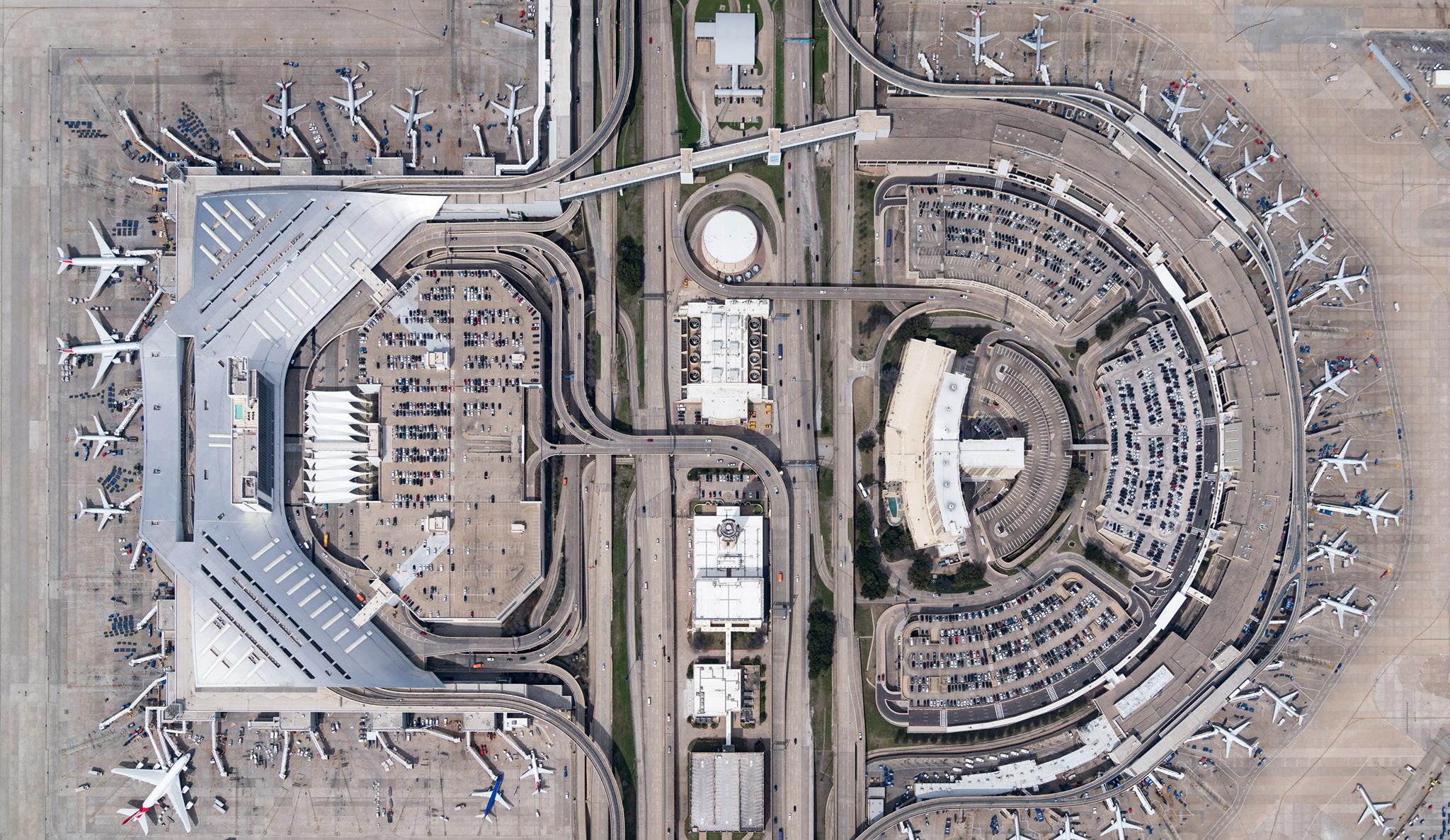
Ackerman notes that the airport already uses windpowder to provide 100% of the elecricity to its terminal buildings.
"A year ago at COP26 in Glasgow, our CEO pledged that we would be net-zero by 2030, that's 20 years ahead of aviation's 2050 goal, and he wouldn't have made that promise if we couldn't do it," says Ackerman.
"We have already reduced our CO2 emissions from the 2010 baseline by 80%. What we need to do now to eliminate most of the remaining 20% is replace our aging nautral gas fuelled Central Utilities Plant with a new clean electricity powered Central Utility Plant [eCUP] and phase out all of the petrol and diesel powered vehicles used on-site.
"When the new eCUP is up and running, the existing facility will serve as a back up to the new one, which will signifcantly increase the resiliency of the airport as well as take out one of our last big chunks of carbon."
DFW is certainly no stranger to adopting innovative solutions when it comes to waste management and other sustainability issues, back in 2020 revealing that its environmental efforts included turning used cooking oil from its F&B outlets into sustainable aviation fuel (SAF).
The initiative is conducted in partnership with Mahoney Environmental and Neste, with the former collecting, treating and providing the used cooking oil to Neste, which in turn converts it into renewable diesel or sustainable aviation fuel that is fully compatible with existing engines and infrastructure.
So, in one way or another, fuel of some description is still making headline news in Dallas!
ACI Africa secretary general, Ali Tounsi, considers some of the main challenges and opportunities facing Africa's aviation industry and tells us more about the goals and ambitions of ACI Africa for the year ahead.

Africa's aviation industry is no stranger to challenges and while many of the traditional, and indeed global ones of safety, security and investment in new infrastructure remain, arguably the biggest hurdle to overcome in terms of future traffic growth is connectivity, and specifically connectivity within Africa.

As the secretary general of the African Civil Aviation Commission (AFCAC), Adefunke Adeyemi, reminded us as the ACI Africa/World Annual General Assembly, Conference and Exhibition in Marrakech last October, Africa has a population of 1.4 billion spread across a landmass of 30 million square kilometres – big enough to fit the US, China, India and parts of Europe combined inside its borders – yet a number of obstacles currently restrict growth and connectivity between African airports, resulting in only around 100 million of the continent's huge population flying today.
To addresss the problem, the African Union is pushing for its flagship project, the Single African Air Transport Market (SAATM) to advance the liberalisation of civil aviation in Africa and act as an impetus to the continent’s economic integration agenda.
SAATM is designed to ensure that aviation plays a major role in connecting Africa, promoting its social, economic and political integration and boosting intra-Africa trade and tourism as a result.
This belief is supported by an IATA survey that suggests that if just 12 key African countries truly opened their markets and increased
connectivity, an extra 155,000 jobs and $1.3 billion in annual Gross Domestic Product (GDP) would be created in those countries. However, the implementation of SAATM is not going as smoothly, or as fast, as ACI Africa would have liked, and is therefore one of the key challenges and opportunities facing the African aviation industry in 2023.

A solemn commitment to the potentially game changing development is one thing, but unconditional implementation is another ball game.
The key to the success of SAATM rests with the government of each signatory State and this, unfortunately, is a major issue as there is little unity between many African countries. Each State has its own priorities and challenges in terms of domestic and political issues to deal with, and in some cases, geopolitical tensions and even wars exist between neighbours.
As a result, with a few notable exceptions, we have come to accept that the desire for a concerted focus and action on regional and continental co-operation and collaboration is not high on the agenda of African States. And this is crucial as most, if not all the institutions and organisations responsible for trade, tourism and air transport in Africa are controlled by governments.
This level of control means that most strategic decisions need to have the endorsement and blessing of governments, which sometimes makes it difficult or even impossible to move initiatives forward.
For example, to date only 35 of Africa's 54 States have commited to the implementation of SAATM, and we believe that this number has peaked. The 35 are Benin, Botswana, Burkina Faso, Cape Verde, Cameroon, Central African Republic, Chad, Congo, Egypt, Eswatini, Ethiopia, Equatorial Guinea, Guinea-Bissau, Gabon, Gambia, Ghana, Guinea, Ivory Coast, Kenya, Lesotho, Liberia, Mali, Morocco, Mozambique, Namibia, Niger, Nigeria, Democratic Republic of Congo, Rwanda, Senegal, Sierra Leone, South Africa, Togo, Zambia and Zimbabwe.
The total includes 94% of the countries in West Africa, 80% of the States in Central Africa, and 64% of those in Southern Africa. For the problematic sub-regions of North and East Africa, we believe that SAATM should be implemented on a route network basis.
For example, Ethiopia and Kenya implementing SAATM through the intra-Africa routes served from Adis Ababa and Nairobi.
In a nutshell, we need to be pragmatic in our approach to SAATM as we will never get the buy-in of all stakeholders to implement it. This means that the roadmap for its implementation should be done by sub-region and route network-wise in order to reap the benefits of the SAATM and set the example for the others to follow suit.
To the credit of AFCAC, a new ambitious campaign to accelerate air connectivity within Africa, the SAATM Pilot Implementation Project (SAATM PIP), was launched last November, starting with 19 SAATMready States with a strong willingness to operationalise the initiative in their respective State.
An open and competitive landscape brings more opportunities to grow, whilst instilling a dose of efficiency at all levels of the business, in order for the aviation industry to remain fit, healthy and on top of its game.
SAATM will eliminate the need for Bilateral Air Service Agreements (BASAs) between countries, which would effectively allow African airlines to more easily operate scheduled flights to any country in the continent.
Under SAATM, for example, Ethiopian Airlines could fly passengers from Addis Ababa (Ethiopia) to Accra (Ghana), where they could

disembark and further proceed with another set of passengers from Accra to Niamey (Niger) on an onward flight without the need for new entry documentation. Such services can transform intra-Africa connectivity by making countries much more accessible.
To clarify, under SAATM, countries will no longer be able to choose which airlines serve their airports in order to protect the interests of national airlines or non-African carriers at the expense of other competent African airlines.
Under the framework, African airlines have access to a larger market which will increase their revenue. More importantly, even for countries that do not operate a national airline or have few flights that connect their countries, under SAATM, there will be flights moving in and out to connect people for business and tourism and aid the swift movement of cargo across the African Continental Free Trade Area (AfCFTA).
Africa has a poor track record in liberalising air transport, which significantly hinders connectivity and competition, and this environment has certainly done little to encourage investment in the continent's airports.
As history has taught us, air transport liberalisation benefits airports of all sizes as a more liberalised environment allows airlines to fly to secondary airports and capture untapped markets, which in turn makes them more attractive to potential investors when circumstances allow.
Airport infrastructure is, of course, a key component of air connectivity and naturally increasing traffic allows airports to invest in adequate airport infrastructure to meet capacity demands.

However, funding new infrastructure remains a key challenge for Africa's airports, especially with so many remaining under the control of cash strapped governments. To add some perspective, the proportion of passenger traffic handled by State-owned airports in Africa is estimated to be at around 90% compared to the global average of 57%.

That is not say that Africa's airports have escaped the attention of private investors with Egis, Groupe ADP, the Limak Group and TAV Airports among the global airport operators to hold an interest in gateways across the continent.
And although ACI Africa does not favour any particularly ownership model, it cannot be denied that the few African airports managed by private consortia have proven to be big successes in terms of the quality of the additions to their airport infrastructure.

These have included new terminals and airside infrastructure which improved safety and security as well as the quality of services offered to travellers.
You will be able to read about some of these airports and their private investors in the 'Africa' themed section of this magazine.
With the full implementation of SAATM seemingly unlikely any time soon, the industry continues to look at ways of making travelling around the continent easier and more convenient for passengers, and removing the need for visas for intra-African travel would certainly be a step in the right direction.
Visas are, of course, in use across the world to restrict travel from certain countries, and if these barriers were removed, more people would almost certainly travel to destinations that they cannot easily visit today.
We support the Africa Union's Free Movement of Persons Protocol (FMPP), which calls for visa-free travel within Africa by regarding the continent as one domestic market.
Airport taxes and charges in Africa are still largely determined by the State with most airports requiring government approval to raise or lower their charges and often having no say whatsoever in the taxes and fees imposed upon them and subsequently the airlines.
Under SAATM, an open playing field will be created where there is a single regulation for the setting up of tariffs, capacity and frequencies for air carriers.
I am sure that this will be a huge relief to airlines as they know that the tariffs imposed on them will be subjected to the terms of a regulatory agency under SAATM rather than the whims of individual African governments. The upshot of this that some airlines will enjoy significant tax reductions going forward which will help lower their operational costs.
The strategic focus of ACI Africa for the next three years coincides with the taking into office of the new board members of the association for the period 2023 to 2025.
We plan focusing on three fronts – Air Transport Development in Africa; Sustainable African Airport Industry; and Safe and Efficient African Airport Operations.
ACI Africa is determined to bring its contribution in the implementation of SAATM, albeit on a route-network or regional basis in Africa, supporting AFCAC’s SAATM PIP along the way.
We will continue to work with regional institutions such as the African Civil Aviation Commission (AFCAC), African Airlines Association (AFRAA), ICAO's Eastern and Southern African (ESAF) and Western and Central African (WACAF) offices, and CANSO, amongst others, in order to ensure a consistent approach towards the implementation of the SAATM.
ACI Africa will leave no stone unturned to ensure that Africa does not get left behind in aviation's commitment to achieving net zero carbon emissions by 2050.

The sustainable development of Africa's airports and protecting the natural environment are key priorities of ACI Africa.
In 2021, for example, the ACI Africa Board set up our Environment and Sustainable Development Regional Committee in order to enhance African airports’ commitment to minimising the impact of aviation on the environment and maximising the effective and efficient use of limited resources.
We are particularly proud at the way African airports have begun to embrace ACI's Airport Carbon Accreditation programme, which is the only global carbon management standard for airports.

At the time of writing, 24 African airports have achieved Airport Carbon Accreditation certification – 11 at Level 1 'Mapping' status; nine at Level 2 'Reduction'; three at Level 3 'Optimisation' and one at Level 3+ 'Neutrality, status – showing a good initial commitment to the ICAO State Action Plan on CO2 emissions reduction.
Of Africa's accredited airports, arguably Abidjan Felix-HouphouëtBoigny International Airport (Ivory Coast) leads the way having achieved Level 3+ Neutrality status followed by Dakar Blaise Diagne International Airport (Senegal), La Réunion Roland Garros Airport (Réunion) and Enfidha-Hammamet International Airport (Tunisia), which have reached Level 3 'Optimisation' accreditation.
On another front, ACI Africa has launched the Sustainable Aviation Academy (SAA) in partnership with its business partner ENVISA, with a first series of six courses linked to the theme of sustainable airports.
Within the ambit of the our African Airports Development Program (AADP), the SAA online platform provides participants with a unique and flexible learning experience, with each course delivered over a period of four weeks, inclusive of modules and assessments to be completed online as well as mid-term live webinars with an instructor.
Participants are thus able to gather knowledge and expertise in sustainable airport development at their own pace. The first batch of airport personnel have already followed the Environmental Management System course.

It is worth noting that Lomé Airport in Togo took part in the pilot programme for the ACI Airport Excellence (APEX) in Safety initiative in 2011 and since then a total of 55 APEX in Safety and 11 APEX in Security peer reviews have been conducted across Africa, with six airports conducting both.
It has been observed that only about 50% of airports which have conducted an APEX in Safety review have eventually been certified, which does raise concerns about their ability to successfully implement the review's recommendations and handle more traffic in the future.
The situation makes us believe that we need to follow up the APEX in Safety reviews to find out more about this disconnect as well as encourage all the uncertified airports which have yet to conduct any APEX review or any other similar assessment to join the programme.
Thus, another ACI Africa initiative designed to complement the APEX programme and help the growth and development of our airports is the formerly mentioned AADP initiative.
The AADP initiative is essentially designed to help African airports achieve excellence in management, operation and capacity building by helping and supporting them in their certification process with expert assistance and training, amongst others. The sharing of experience and expertise amongst African airports is another key feature of the AADP.
ACI Africa has already undertaken a number of such certification assistance missions, including a major one currently under way for the Federal Airports Authority of Nigeria.


Africa arguably offers the greatest development potential of any aviation market as its growth, which started with services in the 1920s by European operators Air France, Imperial Airways and Deutsche Lufthansa before the launch of early air services in countries such as Egypt and South Africa, has been slow and steady rather than spectacular.
Like other regions, African aviation only began to grow significantly after WWII, when airlines such as Ethiopian and Liberian National Airways joined already established carriers such as Egyptair (then operating as Misrair) and South African Airways (then known as Union Airways), which commenced operations in the 1930s.
In recent years, there has been a growing trend towards the establishment of low-cost carriers, which have proven to be hugely popular, with many of them experiencing rapid growth and attracting large numbers of passengers.
Indeed, the demand for air transportation in Africa is expected to continue to grow, driven by the increasing economic prosperity of the continent, the growth of the tourism industry, and the increasing number of business travellers.
And with so few Africans actually travelling by air today compared to the size of the continent – only around 100 million of Africa's huge population of 1.4 billion people fly each year – there is plenty of room for growth.
To meet this demand, many African countries are expected to invest in modernising their aviation infrastructure, including the construction of new airports and air traffic control systems.

The trend towards the establishment of low-cost carriers is also expected to continue, with many of these airlines expected to expand their operations and offer more destinations in Africa and beyond.
TAV Airports has been following African aviation closely for the past decade. With its promising potential and proximity, Africa is now one of the focus regions of TAV for future investments.
Like almost everywhere else in the world, the last three years have been difficult for Africa with air traffic negatively affected by the impact of the COVID pandemic. Nonetheless, we are witnessing a solid recovery and the long-term outlook looks positive.
A recent report by the African Development Bank (AfDB) notes that Africa is set to outperform the rest of the world in economic growth over the next two years, with GDP averaging around 4% in 2023 and 2024.
Despite the significant challenges of the pandemic and the global economic impact of the Russia-Ukraine conflict, 53 of Africa’s 54 countries posted positive growth in 2021 and 2022. All the five regions of the continent remain resilient with a steady outlook for the medium-term.
This is well reflected in the forecasts for the aviation industry. Oxford Economics predicts that the aviation industry in Africa will generate over $150 billion in annual economic activity by 2040, creating up to seven million jobs and contributing to the growth of the wider economy.
While Boeing predicts that Africa will require over 1,300 new aircraft by 2038, valued at over $200 billion, as the demand for air transportation continues to grow.
From a global perspective, both IATA and ACI forecast that air traffic is set to double by the 2040s, and in order to meet this demand, ACI World estimates that $2.4 trillion will be needed in airport investments.
Executive board member and chairman of the executive committee, Franck Mereyde, explains why ever expanding TAV Airports is eyeing new opportunities in Africa.
In Africa, 40% of investments are thought to be greenfield airport projects. While there is a huge potential for growth, global risks such as economic downturn, political instability, pandemics or climate change could well impact the industry in Africa.
A first in Maghreb: Tunisia PPP
Infrastructure development is key to achieve sustained growth. Transportation infrastructure is critical as it enables direct and indirect contributions to the economy by connecting people and transferring goods. Nonetheless, governments in developing countries may be hesitant to allocate resources to major projects like airports. In this sense, public-private-partnerships (PPPs) present a viable model.
TAV Airports was one of the first companies to invest in airport projects in Africa. In 2007, for instance, we won the tender to build Enfidah-Hammamet International Airport and operate it together with Monastir Airport. The deal represented one of the earliest examples of a PPP infrastructure development project in Tunisia and of an airport concession in the Maghreb region.
Located 100 kilometres south of the capital Tunis, Enfidah-Hammamet stands out because of its proximity to a number of tourism destinations in the country.
TAV Airports holds the concession rights for Enfidah and Monastir airports until May 2047. We view them both as long-term projects, and traffic impacting events such as the Arab Spring and most recently the COVID pandemic, have only served to endorse this strategy as we have no doubt that Tunisia has great potential to develop as a major touristic hub in North Africa.
In fact, I want to confirm that TAV Airports still has the utmost confidence in Tunisia’s potential and we continue to promote the tourism potential of the country at global travel and tourism events.
As an aside, Enfidah became the first airport in the African continent to participate in ACI's Airport Carbon Accreditation (ACA) programme.
The decision for Enfidah to join the ACA initiative is in line with our global strategy of focusing on enhancing the customer experience and managing the sustainable growth of our airports. It is an ambition we share with our biggest stakeholder, fellow global airport operator, Groupe ADP, with whom we make up one of the world's largest airport groups.
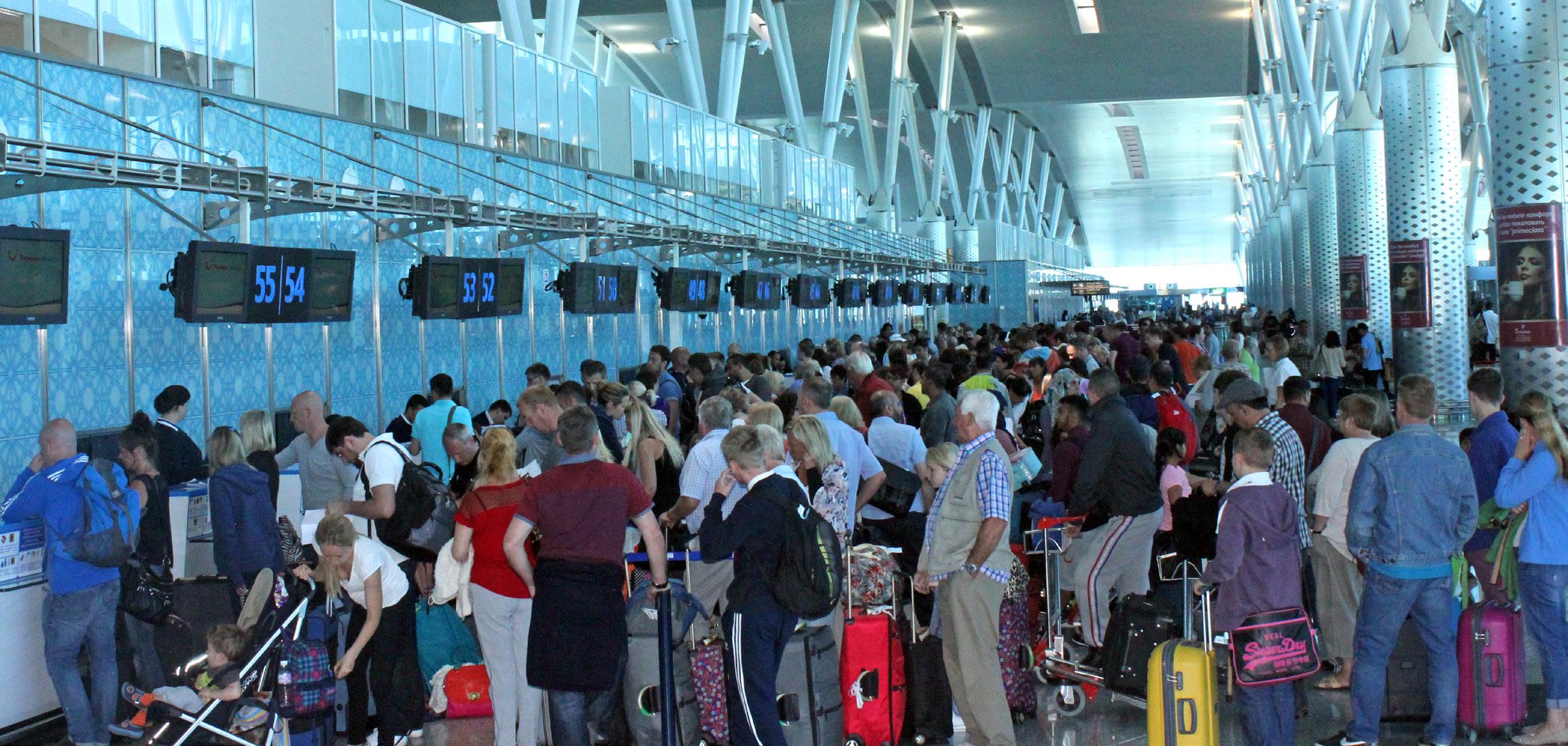
When it comes to sustainability, TAV Airports has an especially strong focus on mitigating the carbon impact of operations across our global
airport portfiolio, with carbon neutrality the ultimate aim for all our airports. I'm proud to say that three of our airports are already carbon neutral and going forward we will do everything we can to reduce the carbon footprint of our other airports. These efforts will include embracing new CO2 reducing technologies and sources of renewable energy. From a wider perspective, we strongly support the development and implementation of Sustainable Aviation Fuel (SAF) for all flights.

In October 2022, a consortium formed by TAV Airports, Nahco Management Services and Planet Projects Limited was selected as the "preferred bidder" by the Federal Airports Authority of Nigeria (FAAN) to operate and develop the international passenger and cargo terminals of Murtala Muhammed International Airport (LOS) in Lagos, Nigeria, for a period of 20 years.
We are currently in negotiations with the government in a bid to finalise the deal and official approvals are expected to follow in due course.
Nigeria has a population of 206 million and is the leading economy in the African continent, factors that give Lagos the potential to become a key aviation hub in West Africa.
The opportunity for growth becomes even clearer if you consider that only around 17 million passengers passed through the country's airports in 2019 – 7.6 million of them through LOS. TAV Airports has pledged to invest more than $200 million on developing Lagos Airport.
As a member of Groupe ADP, we have a global network that serves 280 million passengers annually. Drawing on this know-how, the integrated business model of TAV Airports enables us to design and provide a mix of services tailored to the needs of different airport projects and stakeholders.
One of the pillars of our strategy rests upon expanding the global footprint of our service companies. In this sense, we are following opportunities in Africa mainly through our subsidiaries TAV Technologies, focusing on airport IT solutions and TAV OS, which focuses on hospitality services.
Apart from its Tunisia operations, TAV OS has operated the Star Alliance lounge at Jomo Kenyatta Airport in Nairobi since 2016. Likewise, TAV Technologies already has a footprint in Africa, providing services in Benin and Somalia while pursuing other new opportunities in the continent. AW













Real estate development could act as the catalyst for the successful future development of many African airports, writes NACO's aviation director for Africa, Marcel Langeslag.
As airports continue to recover from the impact of the COVID-19 pandemic, many are looking for ways to build a more resilient business that is less dependent on revenue generated by passengers and aviation activity.
After all, if nothing else, the global pandemic has shown us just how quickly aviation related income can dwindle rapidly when air traffic diminishes.
The situation has renewed the interest in non-passenger income streams, including cargo and commercial real estate.
While airport revenues decreased by an average of 43% from 2019 to 2020, income from real estate remained relatively robust and dropped by ‘only’ 12% according to the ACI Airport Economics 2022 Report.
This illustrates the cushioning effect of real estate as described in our White Paper: How Real Estate Can Help Airports Build Resilient Business (July 2020). In Africa this effect was even more pronounced, with real estate revenues down 4% year-on-year, compared to a drop in total revenues of 42%.
Airports are catalysts for economic growth. Recognising this, governments, airport operators and investors can drive real estate developments that benefit both airports and regional economies.
The concepts of airport real estate, the airport city or aerotropolis have been successfully applied around the world, in major cities such as Dallas, Amsterdam or Incheon. They are increasingly implemented in emerging markets as well, with the Aerotropolis Institute of China reporting that over 50 cities are introducing such developments.
In India, initiatives are underway in cities such as Delhi and Durgapur. In Africa, notable examples include the Durban Aerotropolis in South Africa and the Accra Airport City in Ghana, with more planned.
The airport city and aerotropolis concepts are often associated with large, metropolitan areas and major airports. However, smaller cities, towns and airports can also benefit from real estate developments.
Airport towns or even villages equally enable airports to diversify their revenues and local economies to grow.
Home to some of the world’s fastest growing economies, airport real estate in Africa offers a wealth of opportunities. Initiatives such as the Single African Air Transport Market (SAATM), the African Continental Free Trade Area (AfCFTA) and the Protocol on the Free Movement of People (or Visa Openness) are expected to pave the way for aviation to thrive.
However, with only 23 airports reaching the one million passenger mark in 2021, the African aviation industry is relatively small compared to other regions of the globe. Indeed, beyond the main gateways, infrastructure and international connectivity at secondary airports is often limited.
There are many factors driving urbanisation and industrialisation on the continent, which presents airports with unique opportunities to pioneer developments in their regions:
The pandemic has pushed for more flexible working, but the office is not dead. In Africa, where internet and electricity can be unreliable, working from home is less attractive.
Furthermore, developments in oil and gas and renewable energy in several African countries are expected to drive foreign direct investment (FDI) and increase demand for A-grade office space.

Multi-national companies are increasingly focused on decarbonisation and look for properties that meet green building standards. Developers are steering the momentum of office real estate towards sustainability in an effort to meet tenant preferences and access finance.
Airports, as inter-modal transport hubs, offer great opportunities for sustainable developments. They can benefit both green buildings and the transition to sustainable aviation by integrating low-carbon modes of transport, generation of renewable energy and microgrid solutions.
Retail spaces are also in demand as the retail industry in Africa is on a long-term upward trajectory, thanks to growing disposable incomes. Airports offer a unique proposition for retailers, with high footfall of both passengers and employees, good visibility and local connectivity.
Airports are ideal locations for modern retail spaces, as well as hospitality services, as part of wider airport real estate developments.
Finally, industrial real estate is the best performing sector in many African cities, with manufacturing, assembly, storage, and distribution facilities in locations with good access delivering high yields.
Airports are ideally positioned to capitalise on this opportunity as they often have good transport infrastructure and provide a direct link to air cargo. The air cargo sector has performed well throughout the pandemic and is poised for further growth as the implementation of the AfCFTA gains traction.
This growth will drive demand for cargo, logistics and other industrial real estate at or nearby airports. In many African countries, the agroprocessing sector in particular needs a boost in infrastructure to exploit its production and export potential.
Regardless of size or ownership, landside real estate development can provide an interesting income stream for all airports. Airport real estate can benefit both the airport and be a focal point for local urban development and economic growth.
Its close link with air transport positions it as a unique gateway to the country and an ideal location for international business, attracting global talent and foreign direct investment.
Tailor-made plans for airport real estate development are crucial for success as every airport and city is unique. Clustering industries is key to creating competitive advantages, innovation, and cross-fertilization. African exports via air freight consist largely of perishables, which points to opportunities to leverage regional potential and make airports engines of the economy.
Choosing the right business model based on land ownership, capital requirements and available expertise, positions airports for success. Managing real estate developments is different from airport operations and requires specific commercial skills, bringing together knowledge of finance, property law, marketing and logistics.
Public-private partnerships are often crucial in securing land, capital, and knowledge in the commercial real estate market.
Effective spatial planning is needed to integrate with on- and off-airport infrastructure and facilities, while preserving land for future aeronautical growth. Local authorities should connect infrastructure and public transport to the airport and planned real estate developments for efficient inter-modal connectivity and sustainability.
Unique propositions such as renewable energy, microgrids, and sustainable aviation technologies differentiate airport real estate from other developments.
In successful airport real estate developments, the airport operator, local municipality, regional or national government, and the private sector work together towards a common vision.
For example, the Durban Aerotropolis is driven by Dube Tradeport –the company operating the local special economic zone – and the provincial Department of Economic Development, in collaboration with King Shaka International Airport and local landowners.


Airport real estate development offers a chance for airports, large and small, to diversify revenue and enhance their profile, through good connectivity and sustainability.
Successful developments can boost the local economy and attract international business, as well as potential tourism activities.
Realising the ambition of developing landside real estate and building a resilient airport business, requires collaboration with both public and private sector stakeholders. A common vision, sustainable business model and thoughtful spatial planning are the building blocks of success.
In Africa, notable initiatives include the Durban Aerotropolis in South Africa and the Accra Airport City in Ghana, with more planned, for example in Lusaka. AW


Airport World talks to Olivier Baric, Egis' aviation director for Africa, about the infrastructure specialist's interests in Africa, potential challenges ahead, and why he believes that longterm partnerships are key to delivering on airport promises.
We are investors and long-term partner operators in three airports in the Congo and one in the Ivory Coast. In addition, we recently entered into two technical assistance partnerships with another two airports in Tanzania (Zanzibar) and one in Guinea (Conakry). All of this through our SEGAP joint-venture.
Our role depends on the scale and type of project. We are airport operators, airport investors, project managers, airport systems, equipment and infrastructure delivery experts and technical advisors. The common denominator in all of this is that we take a partnership approach to improving the operational, financial, and environmental performance of every airport we work with.
In Africa that can mean improving physical infrastructure, providing hands-on management support, capacity building and more.
These are long-term partnerships. For example, through our operating company AERIA, we have been running Abidjan FelixHouphouët-Boigny International Airport in the Ivory Coast for more than 25 years, and that involvement along with some €160 million of investment has led to some satisfying successes.
These have included Abidjan becoming the first Level 3+ certified airport in Africa in ACI's Airport Carbon Accreditation programme. The airport was also the first to welcome the A380, and has won several ACI quality service awards.
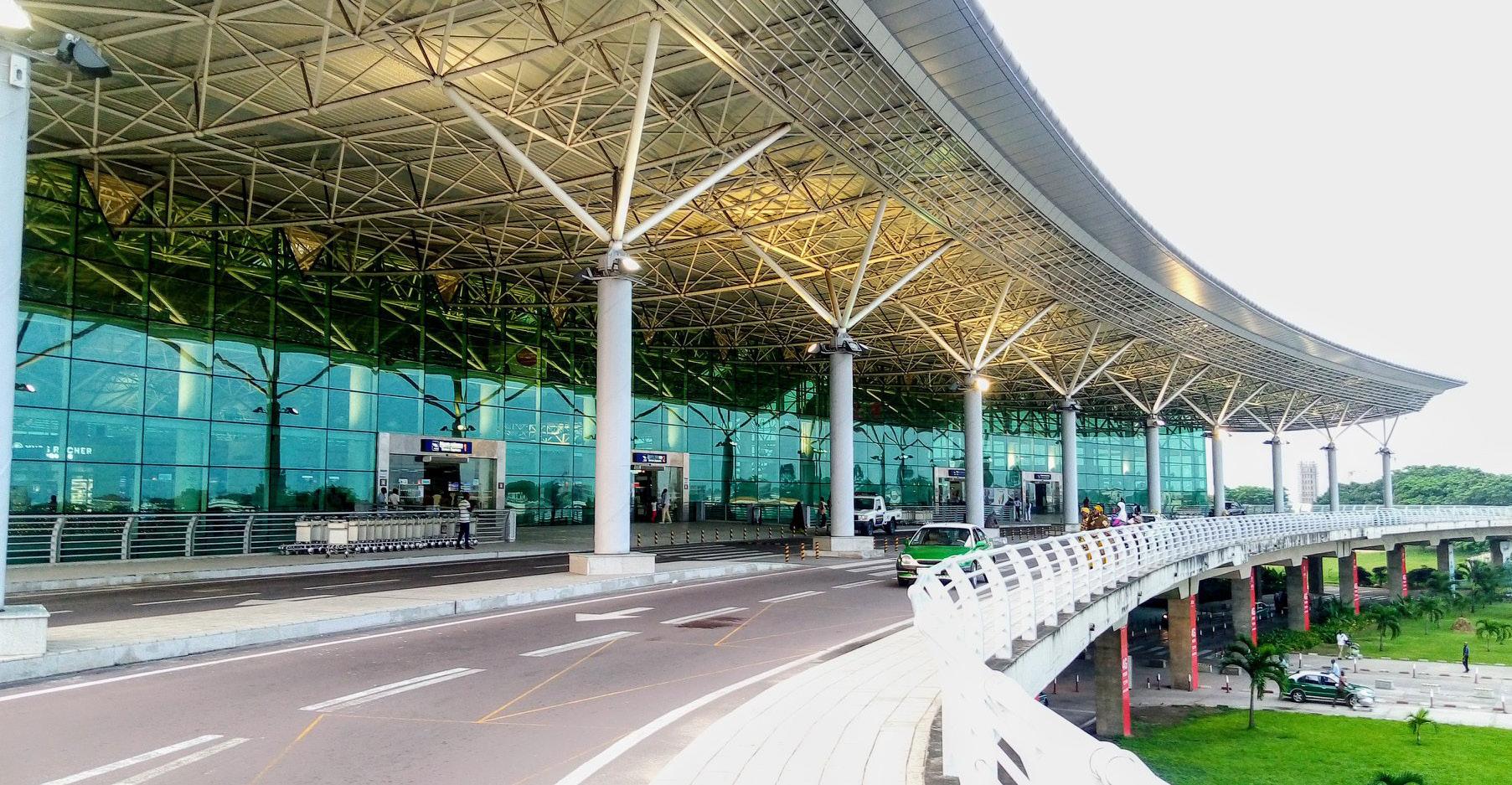
The COVID-19 pandemic had a huge impact of course, and it caused a shift in some priorities, spotlighting health and safety, business continuity and resilience. The airport is recovering well now and looking to maintain its position as one of the main aviation hubs in West Africa by undertaking a major terminal extension to increase capacity.
We started there in 2011, working through our AERCO operating company. Brazzaville Maya Maya International Airport, which serves the capital, has seen considerable improvements since the start of the concession. A new passenger terminal and a new runway capable of handling the A380, make it a safe and efficient air hub in Central Africa.
It welcomed more than 600,000 passengers in 2019 and almost recovered its traffic levels in 2021-2022. Brazzaville offers many connections across the region and the rest of Africa as well as to Paris-CDG.
Elsewhere, Pointe-Noire Agostinho Neto International Airport, located on the country’s Atlantic coast, is gateway to the high potential ports of Central Africa. Passenger numbers have passed 500,000 thanks to a major investment plan, including the opening of a new passenger terminal in 2019 and the extension of the apron. Both airports were awarded the ACI accreditation for 'COVID safe' best practices in 2021.
And then there is the new Ollombo Sassou International Airport, opened in 2013, and located in the central plateaux region, rich in mineral resources, it provides access to a Special Economic Zone.
Today, Africa accounts for less than 3% of global air traffic, so the continent's air transport market has huge development potential and we can expect great improvements in regional connectivity and international travel within and across the continent of Africa. However, building a sustainable air route network that meets both domestic and regional needs, will mean addressing specific constraints and seizing the opportunities that arise. I see five key areas of opportunity and challenge:
African airlines must collaborate to improve connectivity between countries and better serve the African market as a whole. This is essential if they are to overcome the structural challenges they face.
In the meantime, airport owners and operators should strive to contain airports taxes, fees and general airline operating costs to support the development of a fragile industry in these times of recovery. Traffic in Africa has recovered to 90% of 2019s levels, which is encouraging, but there is further to go.
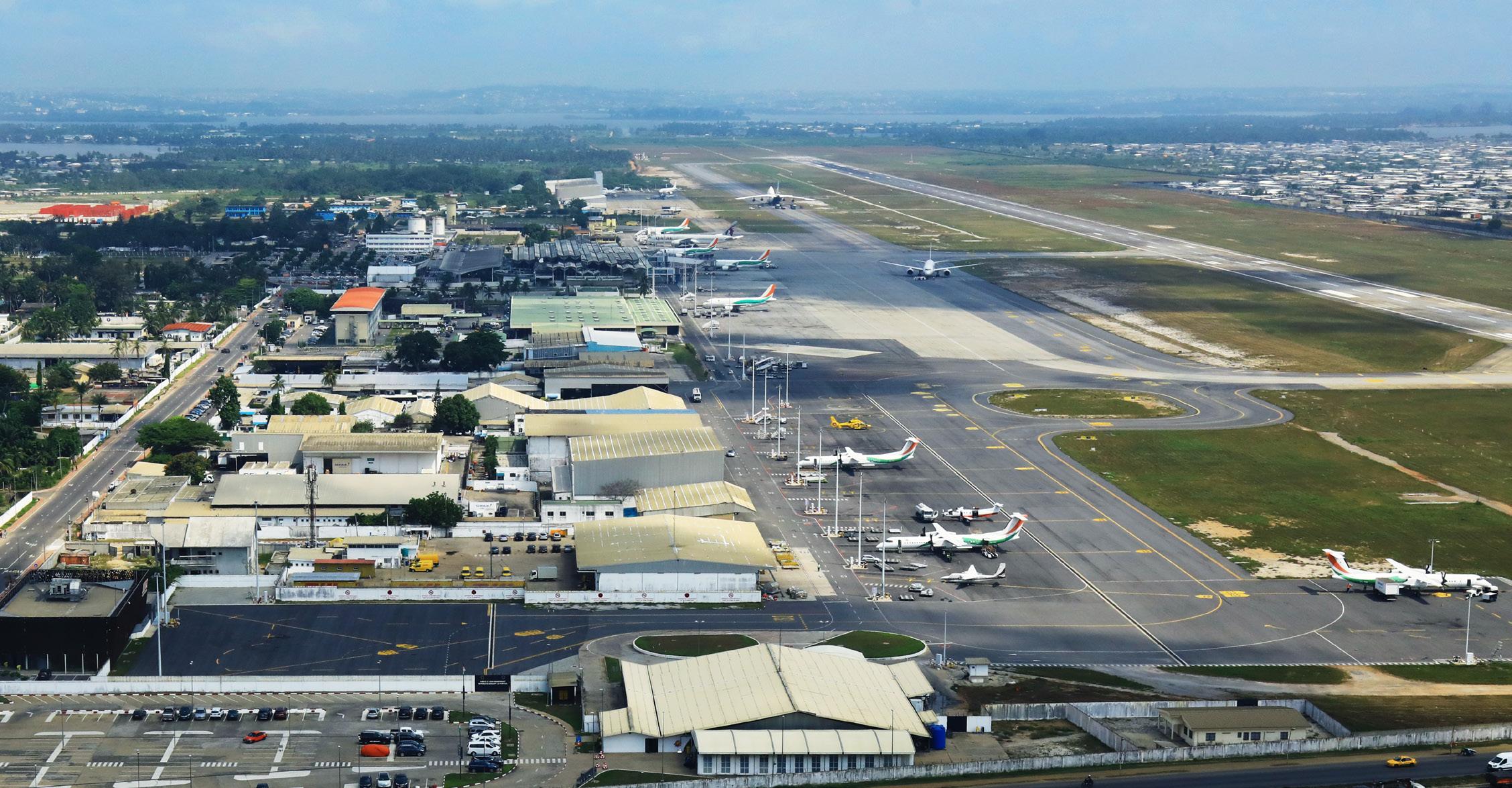
Big is not always beautiful. Choosing to wait and optimise the capacity and efficiency of existing airport infrastructure can be a sensible approach.
A just-in-time investment decision can improve productivity by increasing the average utilisation rate of the infrastructure. This principle is especially important for smaller or emerging markets, where the volume of air traffic is still too low to generate (on its own) the minimum revenues needed to finance investments or even to fund airport operation and maintenance.
The 21st century airport is designed with the right level of initial capacity and within the broader framework of a long-term development plan, allowing its evolution over time.
More than an architectural gesture, its design must be guided by ease of operation for all users, by the operating resources at its disposal and by acting on commitments to control its environmental footprint. This means prioritising renewable energy, opting for bio-climatic architecture, and simplifying future maintenance – all key elements for a sustainable and efficient airport.

This can contribute significantly to economic development. On the one hand, the development and implementation of national air transport regulatory frameworks needs to be clarified with regards the safety and security of air transport and to implement the Abuja conference safety targets.
While on the other hand, national regulations covering access to territories and associated conditions constitute a barrier to mobility on the African continent. The requirements and conditions for obtaining visas must be relaxed.
Information sharing, co-ordinated flow and traffic management, cyber security, and the pooling and interoperability of systems and resources, are at the heart of the continent's air transport development issues. At our Abidjan airport for instance, we are looking at implementing a passenger flow management tool.
The integration of drones into air transport, also to support airport operations, is another active and promising field. In the longer-term, Africa could also prove to be a promising market for the first fully or partially electric aircraft under development.
The investments necessary for inter-regional traffic growth must be planned and developed at the regional level, integrating the specific constraints of each stakeholder. The result: a coherent and fair allocation of financial resources for a balanced share of value.
In this spirit, the fees charged for the use of infrastructure (which account for more of air transport costs in Africa than elsewhere in the world) must be strictly allocated to the service provided, reflecting the reality of the costs incurred and the risks undertaken by the beneficiaries.
The largest airports, capable of generating profits and therefore of interest to investors, should contribute to the financing of low-traffic, structurally unprofitable regional airports, sharing with them some of their technical resources.
Since 1988 we have been working through an investment vehicle called SEGAP. And in 2018 we set up a joint venture with AIIM, one of the leading infrastructure fund managers on the African continent to further support our long-term investment plans.
Today, all our African airports come under the SEGAP umbrella. It’s only by taking a longer-term view that we can achieve the stability required to deliver on promises and realise the huge potential that this continent offers. AW
ACI World's vice president and chief economist, Patrick Lucas, and vice president for airport customer experience, Dimitri Coll, remind us of the economic challenges facing small airports and how enhancing customer service can boost revenues.

Airports are asset-intensive businesses that require large investments just to accommodate a single aircraft landing. They must achieve a critical mass before they can start recovering these large investments in infrastructure and their operating costs to reach profitability.
However, the majority of airports across the globe are small. In pre-pandemic times, as much as 90% of the world’s airports had fewer than five million passengers (in 2019) on a per airport basis. And airports that serve smaller markets tend to have higher overall unit costs on a per-passenger basis.
The economics of airport infrastructure is such that average total costs decline with an increase in market size up to a point – this refers to economies of scale. As such, a significant proportion of smaller airports operate at a loss. This challenge was only exacerbated through the pandemic.
Based on data from the ACI Airport Economics Survey, 97% of airports that have fewer than one million passengers operated at a loss in 2019. The propensity to reach profitability increases with airport size thereafter.

The reason smaller airports remain in operation hinges on the fact that they contribute to the local, social, and economic development of
their surrounding communities. Because of the positive externalities that they generate, government intervention in the form of subsidies or grants helps to cover the shortfall or deficits.
In the case of major airport networks, which consists of a portfolio of airports under a single operator in a given jurisdiction, profitable airports in the network tend to cross-subsidise or compensate the net losses of smaller airports.
Small, emerging, and regional airports play a vital role in feeding traffic into hub airports for onward journeys to other major national and international destinations, while also generating traffic that ensures the sustainability of larger airports within the network.
Airport traffic development has, of course, important social and economic benefits in terms of job creation and the economic vitality for communities where smaller airports may be located.
In many jurisdictions, it also represents an important policy objective for tourism authorities and regional economic development. Smaller airports that are commercially driven or have a policy objective to support the economic development of the communities they serve have various managerial levers at their disposal.
The strategic development of traffic involves several levers and the engagement of multiple stakeholders to ensure its success.
This first part in this process involves setting the scene and understanding the potential demand for new routes. Conducting thorough market analyses and forecasts to determine the viability of new routes or increased air service is a foundational piece.
Secondly, ensuring that an airport has the necessary infrastructure to support the desired level of air service, including terminal facilities, runways, taxiways and air traffic control systems are crucial for being able to accommodate growth in passenger demand.
Thirdly, a key ingredient for success considers the implementation of effective marketing and promotional strategies alongside the local tourism authorities and hospitality industries to increase awareness of the airport and the destination served.

The fourth element relates to airport-airline relations – that is, building strong relationships with airlines and working with them to develop new routes and attract additional air service to an airport is fundamental to air traffic growth.
The provision of incentive packages such as landing fee or passenger fee discounts, marketing support, and streamlined customs and immigration processes are all important measures to consider for stimulating airline demand.
Many airports already offer incentive packages in the form of passenger volume discounts and load factor rebates. Approximately 70% of airports globally offer incentives to airlines, across all traffic sizes, based on results from the ACI Airport Economic Survey.
Enhancing the customer experience goes hand in hand with air traffic development. Airport customer experience management is a holistic and structured concept and can be defined as the practice of designing and reacting to customer interactions to meet or exceed customer expectations.
Increasing customer satisfaction leads to brand loyalty and advocacy, which in turn enhances revenues.
ACI World demonstrated through the research report Does passenger satisfaction increase airport non-aeronautical revenues? that customer experience is the single best way to increase non-aeronautical revenues.
Analysis of the ACI World Airport Service Quality (ASQ) data shows that:
• An increase of 1% in the number of passengers leads to a growth of non-aeronautical revenue (NAR) ranging from 0.7% to 1%
• An increase of 1% in the size of the commercial area leads to a growth of NAR of 0.2%
• An increase of 1% in global passenger satisfaction (as defined in the ASQ Survey) generates, on average, a growth of NAR of 1.5%.
Airports are tasked with meeting and exceeding passenger expectations through different providers including airport operators, airlines, ground handlers, retailers, governmental agencies, and more.
According to ASQ 2022 benchmark, small airports (i.e., less than 2 million passengers) globally are performing well in the fist touchpoints of the passenger journey: Check-In, Security Screening, and Border/Passport Control.
Nevertheless, the commercial experience as well as the experience at the gate are areas that seem to be a component of the customer experience where there is room for improvement. Especially in the optic of increasing non-aeronautical revenues.
There is also room for enhancements in Wi-fi service quality, availability of charging stations, and entertainment and leisure options items. Nonetheless, small airports are performing well in terms of wayfinding which has an important impact on the level of stress experienced by passengers.
A good customer experience is when:
• The customer accomplishes their goal with a positive emotion, in accordance with their needs and expectations, and that it is effortless
• An airport constantly delivers a good experience over time and meets the customer’s expectations, in accordance with the brand promise.
The first step to managing the airport customer experience is to understand the passenger needs and expectations and a programme such as ASQ is a good starting point (aci.aero/programs-and-services/asq).
ACI World supports the growth and development of small and regional airports by a suite of solutions adapted to their reality and business model.

Ready or not, airport managers are facing a major behavioural shift in consumers making purchases from retail and food and beverage concessions, which has given rise to a whole new discipline – Green Concessions Programming.

Customers are increasingly making purchasing decisions based on how sustainable a product or service is, with a strong desire to be more environmentally conscious. Research by the Wharton School of Economics has shown that consumers across all generations are placing higher value on sustainability over brand names and are willing to pay more for 'green' products and services.1
This trend is filtering through to service providers, investors, and airport concessionaire shareholders, who are increasingly intertwining sustainability requirements in investment decisions.
Adding to this pressure, governing bodies are setting ambitious sustainability targets for the aviation industry as a whole. For example, the ACI long-term carbon goal which requires members to reach net zero emissions by 2050.
The public are becoming increasingly aware of the impact that their purchasing decisions can have on the environment. As a result, they are making a conscious effort to be more sustainable in the way that they live – and purchase goods and services. This behaviour pattern is particularly visible amongst younger generations.
According to the Wharton study, the vast majority of Generation Z (Gen Z) shoppers think that sustainability is more important than brand name when making purchasing decisions. In turn, they are influencing
older generations to place more importance on sustainability when buying products and services.
Some 68% of customers, from Baby Boomers to Generation Z, are willing to pay more for sustainable products, an increase of 17% in only two years.
The willingness to spend 10% more on sustainable products went from 40% in 2019 to 83% in 2021, representing a huge opportunity for concessionaires deciding to shift to a more sustainable offer. For example, F&B could provide locally-sourced food or stop selling single-use cutlery.
This shift in consumer behaviour is increasingly being proven as businesses respond to customer demands. The result is a higher engagement in sustainability across organisations and the integration of green decisions across the board.
Slowly, but surely, this is leading to more products that have a reduced environmental impact being made available on the market. More and more, corporate investors are also including environmental, social and governance (ESG) criteria when making investment decisions. This growing trend, called ESG investing, refers to a set of standards that a company’s behaviour will be judged against, and is used by socially conscious investors to screen potential investments.
One way in which airports can work to reduce their impact on the environment is to engage with concessionaires to operate more sustainably. Green Concessions Programmes encourage airport
purchasing
ICF's vice president, Eliot Lees, and senior consultant, Tod Yankee, consider the reasons why airports should implement green concessions programmes.
1 2 4
Waste Management
• Recycling cardboard and paper
• Recycling used fryer oil and grease
• Paper limitation
• Receipt printing management
• Adding specific recycling bins
• Pollution prevention / hazardous waste handling
Sustainable packaging
• Compostable to-go packaging
• Reduction of plastic straw/stir stick usage
• Introduction of Ware washing –multi use dish and siliverware
• Re-usable water bottles
3
Sustainable sourcing
• Green furniture and fixtures
• Environmentally preferable purchasing (e.g.: EPEAT certified for IT / cash register)
• F&B sourcing
• Green supply chain to bring F&B / Retail to the airport
• Use of green cleaning products
concessionaires, such as restaurants and retail shops, to adopt sustainable practices and procedures.
These programmes can include requirements for the use of energy-efficient equipment and lighting, recycling and waste reduction targets, water conservation measures, the use of environmentally friendly products, and educating airport customers on the environmental sustainability.
Green Concessions Programmes range from initiatives implemented on an individual concessionaire basis, or part of a broader Green Concession Roadmap with clear performance targets and a holistic strategy as to how to achieve these goals.
San Francisco International Airport (SFO) is leading the industry with its pioneering Green Concessionaire Programme. This programme is piggybacking off a number of city-wide initiatives.
The airport has set the goal of becoming the first triple net zero airport in the world (Zero Carbon, Zero Waste, Zero Net Energy) and has established strict sustainable construction standards, energy saving and electrification requirements for all tenants, including retail and F&B concessionaires, which operate at the airport.
One discrete action is the banning of plastic water bottles at the airport. Only glass, recycled aluminium, or certified compostable materials can be sold. This initiative eliminated more than 4.5 million plastic bottles annually from the disposal stream of the airport – a significant reduction in waste and GHG emissions.
Yet at the same time – the concessionaire and the airport experienced no loss of revenue from the ban – because consumers were willing to pay a higher price to support improved sustainability.
An example of how consumer behaviour and airport targets are influencing airport activities is given from San Diego International Airport (SAN) which has a Green Concession Programme in place. Its programme rewards and recognises airport concessionaires that take action to reduce water and energy use, minimise waste, and educate their staff and consumers on what green business is all about.
Examples of strategies that have been introduced under this scheme include the implementation of LED lighting, energy-efficient equipment, low-flow fixtures, and recyclable food and beverage packaging.
The airport’s Planning and Environmental Affairs and Terminal Operations departments provide support and assistance to concessionaires
Energy efficiency
• Energy Management (energy star)
• LED and other types of energyefficient lighting to reduce electricity usage
• Energy efficient operational equipment
• Water conservation
• Water management
5
Other green initiatives
• Clean Air: employees commute
• Donation of food to charitable organizations
• Clean energy provided by the airport
• Green fit and finishes
interested in being certified, and those that sign up for this voluntary programme receive exclusive marketing and promotional support from the San Diego County Regional Airport Authority, as well as one-on-one consulting support for the assessment and implementation of strategies.
In doing so, the concession receives a support service from the airport in return for their engagement in sustainability, and the airport receives support in achieving its campus-wide environmental goals in return for their role as programme lead. Not only this, but consumer preferences for green products and services are being made available, increasing the likelihood of purchases being made, and for the reputation of the airport to increase.
In Europe, many green initiatives are linked to waste management. At London Heathrow Airport, for example, a dedicated on-site R&D team is piloting new methods of recycling plastic. Many types of waste that were previously incinerated, such as food packaging and plastic film, could instead become a series of new products, including staff uniforms, terminal furniture and jet fuel. The recycling unit was created through a partnership between the private sector and University College London. The new process could prevent up to 5,000 tonnes of waste from ending up in landfill every year.
ACI World has also contributed in driving change through establishing long-term carbon goals for airports. These goals, developed with support from consultants ICF and Airbiz, commits ACI member airports across the world to reach net zero carbon emissions by 2050.
The ambitious target is achievable, but airports must reduce emissions from across their operations, and so all activities, including from concessionaires.
How are Green Concession Programmes developed?
The carrot and stick analogy can be used to demonstrate the current pathways for implementing Green Concession Programmes. The 'carrot' represents developing programmes for concessionaires to voluntarily commit to take action to reduce their environmental footprint.
For example, this could be the airport aggressively marketing the participants as green concessions or, going one step further, financial
incentives could be offered that would reduce rent if the concession purchases 100% renewable electricity and reduces consumption of gas for other purposes by a certain percentage.
The 'stick' represents initiatives that are mandated by airports or other organisations, often with negative consequences for not achieving goals. For example, the government-driven ban on single-use plastic straws, stirrers, and cotton buds implemented in England in 2020 which made it illegal for businesses to sell or supply the items.







Airports considering implementation of Green Concession Programmes will have questions around the associated benefits and drawbacks.
The key benefit of implementing these programmes is that they are playing a central role in reducing the environmental impact of the airport they control. By encouraging concessions to adopt sustainable practices, airports can take a step to reduce energy consumption, waste generation, and emissions.
Additionally, green concession programmes can also promote a culture of sustainability among airport tenants and stakeholders, furthering the goal of reducing the environmental impact of airport operations.
This, in turn, would assist airports in meeting their agreed sustainability targets. For example, ACI have created a long-term carbon goal for their member airports to reach net zero emissions by 2050.
In addition, to achieve the highest-level Airport Carbon Accreditation, a carbon management certification standard endorsed by ACI, airports must demonstrate that they are actively driving sustainability across their operations.
However, emissions reductions are not the only benefit of implementing green concessions programmes as they often have economic benefits. By reducing energy and waste costs, for instance, concessions can save money and become more financially sustainable. In addition, green concessions can attract environmentally conscious customers and improve the reputational image of the airport.
A key concern for both airports and concessions when looking to make changes for environmental benefit will be cost. Whilst some initiatives come with a price tag, it does not necessarily have to be borne by those leading the implementation.
This takes us back to the SFO example in which ICF concluded that consumers would be willing to pay more for a green service at an airport. As reported by First Insight research, there is a significant increase over the last couple of years in a preference for sustainable brands, leading to a willingness of consumers to pay more for sustainable products.
Given the demonstrated shift in which consumers of all generations are expecting more sustainable options and willing to pay more, airports cannot afford to not engage with concessions on this topic.
As airports do not directly provide the concession services, it may seem a challenging and potentially costly task to implement these strategies. However, through creativity, and some level of incentives, airport management teams can indirectly shape the actions of retail and F&B tenants.
For example, airports could take steps to integrate sustainability into the onboarding process of new concessions. This may be through the integration of environmental standards into procurement contracts and purchasing decisions, as well as through workforce education, training and expectation setting once contracts have been signed.
Additionally, to encourage those who are already tenants to reduce their environmental impact, the airport could work to foster collaborative spaces and knowledge sharing opportunities.
Initiating a regular session to bring sustainability to the forefront would likely lead to greater engagement and impact. To encourage the uptake of initiatives further, airports may choose to offer a financial incentive for the implementation of strategies.
It is important to recognise that strategies will vary, and that not every approach will be appropriate for every airport and location.
The key takeaway here is to set realistic goals based on local conditions and the airport infrastructure available. Establishing a baseline and ways of measuring improvement will also be crucial in ascertaining success.
Understanding what is achievable is essential, and progress will only be made if the airport carefully collaborates with tenants and is realistic in their strategic timeframe.









China's re-opening to international travel is likely to be more of a slow burner than a game changer for the aviation industry, writes OAG's chief analyst, John Grant.
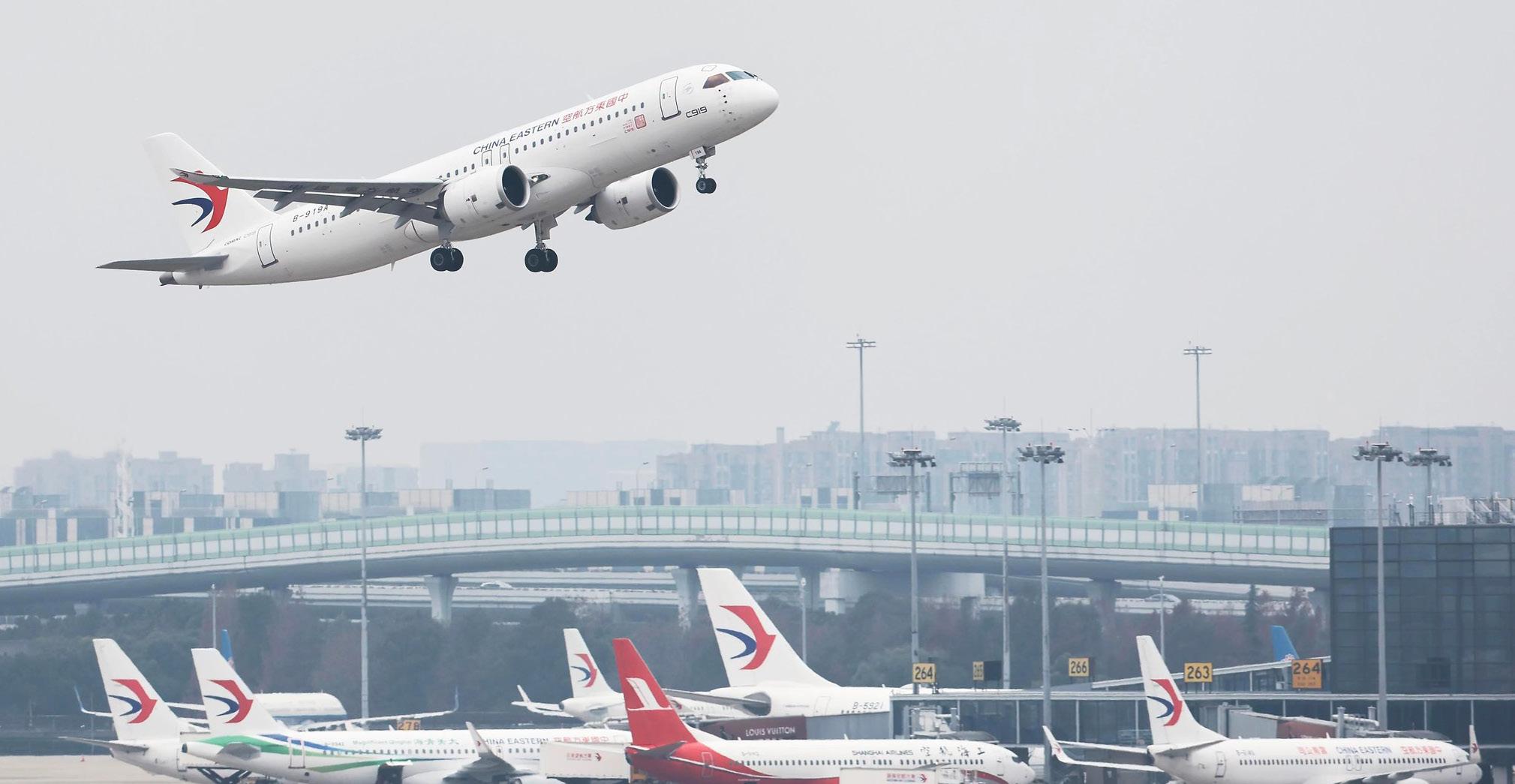
The news of China re-opening to all international travel from January 8, 2023, came as a surprise to most forecasters. Indeed, considering how much China’s capacity has changed over the last few years, it was reasonable to expect further disruption.
In the past three years, China went from being the fifth largest international market in the world with over 102 million seats, to just 7.4 million seats international seats in 2022, making it 51st in the global rankings – just ahead of Ethiopia, but behind Cyprus. Understandably, this was a collapse with serious implications for the entire industry.
Prior to the January re-opening, the international market from China stood at just 7% of its pre-pandemic levels. Although the locally based airlines were to some extent able to turn their capacity towards domestic services, for most of them, the impact on financial results was still crippling.
Chinese airlines unsurprisingly reported disheartening figures at the end of 2022, with Air China and China Southern showing year-to-date losses of $4.6 billion and $2.4 billion respectively. For China-based carriers, then, the removal of quarantine requirements was welcome news.
However, it will take time for the market to bounce back, as airlines need to adapt on an international level.
One thing to consider is that the sale of flights to and from China has been largely suspended since 2020. This is partly due to operational difficulties: limitations on capacity, damaging operating performance, expensive penalties of presenting COVID-positive passengers and/or staff are just some of the issues global airlines could face in the market.
This put most airlines operating flights to and from China into maintaining a 'holding position', essentially operating with minimal
capacity in the market until its eventual return. For example, in 2022, Hong Kong Airlines had less than 10% of its 2019 China frequency, and Singapore Airlines reduced the number of flights to China from up to 30 daily services to just one a day.
For most airlines, then, rebuilding capacity to and from China will be a slow process that will require careful consideration, especially for American and European carriers, which have largely re-oriented their aircraft to other international or Asian destinations and now face the logistical hurdle of finding capacity across all routes.
Finnair, amongst others, had previously spent many years focusing on developing a stronger China market presence, but has now built a completely new network based on United States destinations and much less exposure to China and the broader Asia market.
With many airlines having pre-sold many of their summer 2023 flights, switching capacity to now also cover China might pose a problem.
European carriers find themselves in an even more difficult position given the current geopolitical situation. For airlines based in Asia and North America, accessing China is a perhaps logistically challenging, but otherwise feasible reset to the normal operating patterns and schedules. With flights scheduled to maximise onward connectivity, it will largely be a return to business as usual.
For European airlines, however, an eventual return to China will be especially challenging as they must continue to avoid Russian airspace.
In such a situation, alternate routings from Europe to Asia require either a southerly track crossing Central Asia, or a northerly routing which sees aircraft reach almost as high as the North Pole before heading back down.
In either case, the re-routing adds around one to two hours of flight time, taking the total beyond the twelve-hour mark – the point at which carriers have to grapple with complex aircraft integration issues that bring about either a delay to the returning flight, inefficient crew and aircraft utilisation, or a range of missed connecting opportunities.
To take the example of Lufthansa, which operated 2,100 flights to China in 2019, adding an extra two hours of flight time equals 175 days of additional flight time just in one direction.
No airline has such spare capacity in its fleet, meaning that even after this international re-opening, airlines will likely have to continue to operate with less frequency than in 2019 – and for some, returning to this market might not be worth the lost opportunities elsewhere on a global scale.
A number of administrative and industry-related factors have to be taken into account when evaluating the recovery of China-based airlines in the past year.
First, throughout 2022, these airlines continued to operate to Europe via Russian airspace, which created a significant time and cost benefit to carriers in a re-opened market. This was added to the pre-existing financial advantage that Chinese airlines enjoy over European rivals due to lower wages and operating costs.
Second, there is the issue of Chinese travellers being held back by the lack of passports. China suspended the renewal of passports in the last three years, meaning that approximately 30% of the market will need to reapply for their travel documents.
This is a time-consuming process, even without the immense backlog that administrative bodies will now have to address. Whilst, of course, this still leaves about 70% of Chinese passports valid, it will remain an impediment throughout the early months of the international re-opening for outbound travellers.
Third, it must be considered that prior to 2020, outbound travel from China was largely led by group travel and package holidays, which we expect will remain the same following the re-opening.
However, since the pandemic, many package operators have developed other source markets, such as India and the Middle East.
Any tour operators hoping to tap into the China market again will have to go through the logistics of re-contracting and adjusting product requirements, making this market slower to rebound. Instead, we can expect that visiting friends and relatives will be driving recovery in the first half of the year, with the US (and its population of 3.8 million Chinese Americans) being a key destination.
The state of recovery: China aviation’s present and future Some of these factors support, while others work against, China’s airlines, and the mixed route of recovery reflects that well.
Rebuilding is well and truly underway, with some of China’s biggest airlines operating more domestic seat capacity than in February of 2019. China’s biggest low-cost carrier, Spring Airlines, has also recorded strong capacity growth, with seats now 46% higher than in February 2019.
Juneyao Airlines has also seen growth, with seats 30% ahead of February 2019.
In terms of domestic flights, not all routes have recovered to their pre-pandemic level yet, admittedly in part due to the timing of the Chinese New Year, which fell on January 22 this year versus February 5 in 2019.
Chengdu-Beijing, Guangzhou-Chengdu, Beijing-Shenzhen and Chongqing-Shenzhen are all currently below February 2019 levels. However, of the top 10 busiest domestic routes, Guangzhou-Hangzhou and Beijing-Shanghai have recovered well, with 20% more seats in February 2023 than the corresponding month in 2019.
From an international perspective, the market still operates at just 18% of its February 2019 levels, but seat numbers are seeing a steady increase.

Carriers added 355,000 more international seats compared to January. Capacity has grown across most destinations, with Thailand, Australia, the UAE, Vietnam, and the Philippines having seen the highest levels of recovery. Currently, the two largest international markets are Hong Kong and Macau.
Overall, China aviation has begun a slow but steady process of returning to its pre-pandemic situation. The removal of restrictions in January was sudden, but as expected, it has brought about slow change and we will have to wait even longer before China regains its former position as a major international market.

At the lounge, a warm welcome and a respite from the rigours of travel is, of course, expected. But a welcoming airport has many facets.
The airport journey is comprised of many touchpoints, each of which contributes to providing a sense of hospitality. And a welcoming environment is about more than a comfortable seat or a well-chilled glass of wine – it’s also something that creates an emotional response.
Our airport passengers’ paramount concern is to get to their flight on time, and that everything is being done to make their journey as stress-free as possible. Clear communication is needed before their arrival at the airport through to their departure, helping them understand where they need to be at all times.
Passengers want communication to be as straightforward as possible with minimal touchpoints. Removing stress makes for a happier traveller, and one more likely to engage with opportunities at the airport.

Yet all too often, airports are a collection of experience silos, and rather than taking a holistic approach, they behave like an orchestra with no conductor. Moreover, some parts of the journey, such as passing through security, are often neglected when it comes to thinking about whether or not they add to the calm or increase stress, resulting in ‘hospitality’ being overlooked as it goes on the back burner. However, travellers rightfully expect a joined up and seamlessly good experience.
The airport is a place in which a multitude of experiences contribute to the welcome that their host city extends, and everyone that is part of the airport’s infrastructure has a role to play. Each person at the terminal, from a smiling flight-crew member passing by, to the helpful check-in team member, creates an impression.

The sentiment evoked by all of these interactions may pass almost unnoticed, but each builds indescribably to the sense that everyone
is working to serve the same customer and that everyone shares responsibility for that guest.
While lounges, airport F&B and retail are often regarded as the experts of what hospitality can look like, by working in partnership we can share learnings and create a common blueprint to deliver a warm welcome across the terminal.

Digital technology can help here. A platform that can bring all the actors and services together in one tool can considerably help to create a seamless and reassuring experience. Digital order and pay options, for example, can take the stress out of dining, shopping or booking facilities, enhancing the human element of service.
Today’s travellers are used to doing almost everything seamlessly on our phones. Not facilitating this at the airport is not just a frustration for the traveller, but a missed revenue opportunity.
And there is much to be gained. In our post-COVID world with longer dwell-times, people are walking through airports looking for entertainment. While some are dashing to their flight, many want to enjoy their time at the airport by seeking guidance on how to do so.

Keeping them informed on available amenities so they can choose their own paths rather than randomly choose the first restaurant, bar or shop they see can allow them to truly customise their experience.

Letting them know where they need to be and when allows them to make a call on whether they have time to relax. This will lead to greater satisfaction with their airport experience, but it follows that it will also encourage more spend.
Airports must find the perfect balance that today’s travellers seek. Ease of access, simplicity, choice and control offered by digital mobile tools. Pairing these with the warmth of staff members committed to offering a more personal, and more bespoke service, will lead to an improved customer experience across the airport journey.
The latest news, views and opinions from ACI World Business Partners across the globe.
Global air and travel services provider, dnata, has launched operations at Zanzibar Abeid Amani Karume International Airport (ZNZ) with its partners Emirates Leisure Retail and SEGAP – a joint venture between airport infrastructure and operations specialist Egis – and private equity fund manager African Infrastructure Investment Managers (AIIM).
The three companies, which have already invested over $10 million at the airport and created some 500 new jobs, say that they will work with Zanzibar Airports Authority (ZZA) to deliver "world-class services for airlines and passengers" at ZNZ's newly-built international terminal.
The partnership is expected to "significantly contribute" to the government’s target of boosting its trade and tourism sectors.
For its part, dnata will provide its globally renowned, quality ground, passenger and cargo handling services to airline customers at ZNZ, which it says will ensure the safe and timely operations of flights and a good travel experience for passengers.
In addition, dnata has launched meet & greet and lounge services through its airport hospitality brand, marhaba, to help passengers further enhance their experience and enjoy a smooth airport journey from check-in to boarding.
Emirates Leisure Retail has partnered with MMI as master concessionaire for all food and beverage, duty free and commercial outlets at T3. In collaboration with Eight Inc, the companies have created the innovative and immersive travel experience, ZOMA, designed to create a sense of place and extend the holiday feeling for passengers.
In the ZOMA Zones each store is inspired by the scents, feelings and flavours of the island. In addition to these outlets, ELR and MMI carefully selected and curated the best retailers from the island to spotlight some of the best that Zanzibar offers.
SEGAP has entered into a 10-year technical partnership with Zanzibar Airports Authority (ZAA) to manage and operate Zanzibar and Pemba airports.
The consortium states that it will act as a long-term partner to help position Zanzibar as a leading tourism destination, improve airport performance across all fields (including passenger experience, operation, profitability, etc) and enhance airport infrastructure and services. It will also act as one project team for Zanzibar Airports Authority, covering different airport management and operation aspects.
Steve Allen, CEO of dnata Group and chairman of Emirates Leisure Retail and MMI, said: "We’re delighted to celebrate the launch of our airport services and retail offering with our partners at Zanzibar’s new, advanced airport terminal.

"We are confident that our investment, alongside our commitment to safety, quality and service excellence, will provide a major positive impact on Zanzibar’s transport, tourism and trade industries. This in turn will deliver significant benefits for the local community and businesses.
"We will continue our efforts to consistently deliver world-class services, earn the trust and loyalty of airline customers and travellers, and be an employer of choice in Zanzibar."
Egis' aviation director for Africa, Olivier Baric, noted: "We are delighted to continue our key role in ZAA’s strategic development in co-operation with the airport’s stakeholders, after a successful year of co-operation, where we have contributed to operational improvements to support the growth of tourism in Zanzibar.
"Together, and over the next 12 months, we will continue with our endeavours to support the modernisation of facilities, processes and staff needed for Zanzibar to achieve high quality, safety and security services in order for Zanzibar to be recognised as having an international airport that is an outstanding gateway to a destination that has everything to attract visitors, from world-class beaches to a UNESCO World Heritage site."
ADB SAFEGATE, a global leader in automating the aircraft docking and turn process, has launched the Intelligent AiPRON, which it describes as an "innovative platform for managing airport apron operations in the face of today’s challenges".
It says that AiPRON's holistic, intelligent approach utilises machine learning technologies to provide better predictability of operations and brings the elasticity required to ensure a consistent level of safety, productivity, efficiency, and passenger experience despite sudden market changes.

“ADB SAFEGATE is continually innovating to provide new ways for airports and airlines to optimise operations that will ultimately automate the entire docking and turnaround process,” comments vice president for gates, Thorben Burghardt.
“With Intelligent AiPRON we are taking the natural next step by integrating all the systems and processes important to apron operations into a single ecosystem that uses the latest technologies to optimise taxiing, docking and pushback procedures and improve the efficiency and elasticity of ground handling operations as a whole.
“The new platform seamlessly integrates with our Safedock advanced visual docking guidance systems (A-VDGS) and AiPRON Manager solutions installed on more than 12,000 gates around the world, allowing airports and airlines to further capitalise on existing investments."
In other news ADB SAFEGATE has completed a lighting and runway upgrade at Münster Osnabrück Airport in Germany, while its Australian division has won the largest airfield lighting contract in its history and, as a result, is set to deliver its latest Airfield 4.0 technology to Western Sydney International (WSI) Airport.
The greenfield airport, which is also Australia’s largest aviation project in many years, is due to open in late 2026. "We are excited to be part of Australia’s largest aviation industry project," enthused ADB SAFEGATE's vice president for Australia & New Zealand, Christiaan Schenk.
Transoft Solutions, developers of productivity-enhancing software and services for the civil, transportation and aviation industry, has appointed Daniel Shihundu as its new CEO, replacing company co-founder, Milton Carrasco, who has decided to a step back after three decades as CEO and chair of the Board.

In his new role, Shihundu will be responsible for providing leadership, guidance and mentorship throughout the organisation, developing company strategies and goals, overseeing the execution of Transoft’s operational plans and budgets aligned to the strategic plans, executing mergers and acquisitions, and sustaining the company’s culture through the articulation and embodiment its vision, mission and values.
Transoft Solutions was born in 1991 when Carrasco launched its first product, AutoTURN, which was borne from his master’s thesis 'Computerized Vehicle-Turning Simulation: An Interactive Application'.
“I have every confidence that Daniel will be successful in carrying the torch as Transoft’s CEO and ensuring the company’s continued growth and success, given his years of embracing the Transoft culture, his sound leadership and methodical approach. I look forward to seeing Transoft continue to evolve and grow under his leadership," said Carrasco.
The Chicago Department of Aviation (CDA), in partnership with Unibail-Rodamco-Westfield (URW) Airports, has unveiled an Evolve by Hudson store in the newly-expanded Terminal 5 at O’Hare International Airport and confirmed that it will joined by Chick-fil-A and Protein Bar & Kitchen outlets this summer.

Locally-owned Hyde Park Hospitality and its partner Phillips Concessions, 100% Airport Certified Disadvantaged Business Enterprises (ACDBE), will own and operate the Chick-fil-A restaurant. While the also locally based Protein Bar & Kitchen will run the O’Hare location along with ACDBE partners DC Garrett Group and Chicagoan Miguel Cruz of BT Express.
The concessions’ locations are a part of the largest set of concessions agreements at O’Hare in more than 30 years, which were proposed by mayor, Lori Lightfoot, and approved by the City Council in May last year.
“Our continued investment at O’Hare is creating thousands of jobs, new opportunities for diverse businesses and an unparalleled traveller experience,” said CDA commissioner Jamie Rhee. “The expanded Terminal 5 is bringing new and exciting dining and retail to the airport and building an even stronger representation of local and minority business owners.”
URW’s senior vice president of airport operations, Brian Petrow, said: "The growth and opportunities we’re creating at Terminal 5 are exciting. We are thrilled to partner with the CDA to create a more diverse, dynamic experience for our customers.”
The restaurant openings are part of the $1.3 billion revamp of Terminal 5 that added 350,000 square feet and 10 gates and modernised the existing space. Delta Air Lines moved from Terminal 2 into Terminal 5 in October 2022.
Smiths Detection has been awarded a contract to supply New Zealand’s Aviation Security Service (AvSec) with advanced checkpoint security technology for its five major international airports.

The agreement will result in the supply of 35 of its HI-SCAN 6040 CTiX computed tomography (CT) X-ray machines across Auckland, Christchurch, Dunedin, Queenstown and Wellington airports.
Smiths Detection notes that the HI-SCAN 6040 CTiX meets international regulatory requirements in both the USA and EU and will ensure "the highest level of security while improving the experience for both passengers and operators".
The carry-on baggage scanner can speed up security screening by allowing passengers to leave laptops and liquids in their cabin baggage, as well as deliver cost savings to airports as it is the most energy efficient checkpoint CT X-ray on the market.
In addition, Smiths Detection will also supply its iLane.evo smart automatic tray return system solution – which delivers a steady flow of trays, removing bottlenecks and providing a seamless checkpoint journey – and its iCMORE Weapons algorithm that supports security operators by identifying knives, guns, gun parts or ammunition concealed in bags.
Each piece of equipment is part of Smiths Detection’s integrated checkpoint and uses leading-edge technology designed to help increase security, improve passenger experience, and enhance operational efficiency.
“We’re delighted to be continuing our long-standing relationship with New Zealand AvSec. Through the roll-out of this technology, passengers flying out of New Zealand’s international airports will have a smoother and more efficient checkpoint experience," enthused Smiths Detection’s North & South Asia market head, Aurelien Guilbert.
HappyOrNot has added another dimension to its offering by enhancing its customer feedback terminals with artificial intelligence designed to capture more demographic information about users.
The new terminals use a built-in camera system and AI software to unlock and connect in-moment anonymous feedback data with respondent(s) demographic information.
The demographic analysis works by converting and mapping facial features into numerous data points to form a vector. The anonymised vector is then analysed by the AI to estimate the feedback provider’s age and gender – with up to a 95% accuracy rate.
HappyorNot is quick to point out that unlike facial recognition tools, its updated Smiley Touch terminal does not identify the individual, instead its only purpose is to analyse a silhouetted vector, which is specifically designed to hide the respondent’s identity.
"We know that when it comes to customer loyalty, all it takes is one good or bad experience. Yet, providing a personalised service can be challenging when you have a broad range of customers," says Miika Mäkitalo, CEO of HappyOrNot.
“Our priority has always been to make customer feedback more digestible, and this latest version will go a long way in providing another layer of context for businesses. This new capability is brilliant for our customers, and I’m very pleased that we are the first in the market to deliver this innovation.”
Elenium has been selected by Queenstown Airport to provide it with new bag drop and check-in kiosks as part of a multi-million dollar upgrade of the terminal designed to make it more accessible and user-friendly.

The scope of its solution will cover six new bag-drop units and a further nine self-service kiosks by June this year, which will provide a full and fast check-in process. This is in addition to the 15 kiosks that were installed in 2019, along with full management and monitoring software that will ensure operational issues can be addressed proactively.
“We are pleased to partner with Elenium again on a technology solution to enhance customer experience at Queenstown Airport and support staff working here," said Queenstown Airport’s head of infrastructure delivery, Jo Learmonth.
"We want to get passengers checked in as quickly and easily as possible and this investment will help us to achieve that."
Elenium CEO and co-founder, Aaron Hornlimann, believes the upgrade shows Queenstown Airport’s commitment to modernisation and improving the customer experience.
He said: “Nobody likes waiting in queues to check in or drop bags. Queenstown Airport has shown that self-service technologies can not only help at peak times, but they can provide a better passenger experience, encouraging those visitors to come back."

Membership Region: Africa
Type of Business: Consulting & Management
W: www.th-airport.com
TH Airport Consulting offers service excellence for planning and the optimisation of airports with a focus on Passenger Experience, Terminal & Master Planning, Airport Processes & Security as well as Airport Strategy development.
Membership Region: North America
Type of Business: IT & Communications
W: https://casper.aero/ Casper is an innovative IT company specialised in the development of real-time location-based monitoring and analysis tools. Casper delivers airport noise and flight tracking systems, A-CDM situational awareness solutions and interactive community involvement websites.
Membership Region: Africa
Type of Business: Security
W: www.rosenbauer.com/ Rosenbauer is a world leading manufacturer of firefighting and disaster protection technology. The company develops and produces vehicles, fire fighting systems and equipment for customers all over the world including airports, unicipalities and industry. All the main standards are covered by products manufactured in Europe, the USA and Asia.
Dr Richard Plenty and Terri Morrissey reflect on the recruitment challenges facing airports and the potential benefits of bringing back older, more experienced staff.
As we embark on another year, many of us engage in the ever-optimistic pursuit of making New Year resolutions. We resolve to get fitter, lose weight, eat less, join gyms, stay positive and generally do better.
We do this even though we know that within a month or two, much of our initial enthusiasm for change will have waned or died away. As Oscar Wilde is reported to have said, it is “a triumph of hope over experience”.
While this may be so, there is a lot to be said for using the New Year as an opportunity for taking stock and coming up with plans for the future. There are many pressing issues and challenges which need addressing as we move forward into 2023, not just for individuals but for organisations and societies.
Recovery from COVID is a prime example. The COVID pandemic may be gradually coming to an end three years on, but its effects continue to play out for societies in terms of long-term sickness, pressures on health services, mental health and economic impacts. The consequences for organisations have been no less profound. Many people were laid off in the downturn to reduce costs, but now that business is growing again it can be difficult to attract them back.
Recent analyses have provided a number of explanations for these trends. Firstly, some people have experienced long-term illness and sickness including psychological and mental health issues and have dropped out of the workforce.
Secondly, others have started to reassess their lives and the trade-offs between working and not working, with some taking opportunities for early retirement and others seeking more flexible options. There is a reluctance on the part of many to return to offices and long commutes – with a preference for the flexibilities associated with homeworking.
Thirdly, many employees in lower paid jobs in health, retail, and production have seen their pay fail to keep pace with inflation and are less engaged and motivated than before.
Many airports have found it difficult to keep up with the demand for travel. The 32nd ACI World Annual General Assembly in Marrakech on October 25, 2022, passed a resolution emphasising the importance of creating a strong and diverse workforce to ensure the long term resilience and sustainability of the aviation system.
And a recent ‘ACI White Paper – The Evolution of the Airport Workforce: Turning Challenges into Opportunities (2022)’ has focused attention on this issue and provides some practical ideas for action.
Bringing workers (back) to the airport is one way of starting to address the workforce challenge. Large segments of the population have left the workforce entirely, especially those in the 50+ age group, leaving many workplaces bereft of older workers, resulting in large gaps in expertise, experience, institutional memory, and wisdom.
Can this trend be reversed? Ageist attitudes will need to shift to create a welcoming environment for older employees to feel valued.
Efforts are being made by governments and some employers to entice recent workforce leavers back into work. These include retraining, 'clinics' in financial planning and money awareness and tax incentives to encourage ‘work’ rather than ‘retirement’. Scaling down and flexible working hours may encourage older workers to come back on a part time basis thus capturing some of the lost experience and wisdom.
Mentoring programmes whereby older workers pass on their skills and knowledge to newer recruits are also ways to capture and redress the potential drain of experience. Some years ago we were impressed by Dallas/Fort Worth International Airport’s policy of bringing back older employees and retirees to act as airport wayfinders and guides for anxious passengers. Their reassuring friendly presence was a welcome addition to the airport journey.
Deciding to embrace age as part of the diverse and inclusive workplace of the future may bring realism into the frame, turning Wilde’s statement on its head and providing an opportunity for “experience over hope”.
Heathrow Airport CEO, John HollandKaye, has informed the Board of his intention to stand down during 2023 after nine years in the hot-seat. Praising his “exceptional leadership”, the Board notes that he built a strong management team, helped develop a consumerfocused culture, improved cost efficiency and put “Heathrow at the forefront of global aviation’s decarbonisation”.
Kristina Ferenius will replace Mats Påhlson as Swedavia's new CFO. Ferenius, who is currently the CFO of Sveaskog, will take up her new role on August 1. Påhlson is leaving Swedavia after eight years to pursue a freer role as a consultant.
A belated welcome to Atif Saeed who was appointed CEO of Philadelphia International Airport (PHL) on December 1, 2022. "Saeed’s leadership will be critical in helping enhance Philadelphia International Airport’s position as a major economic driver for the city and region, helping to support thousands of jobs,” said mayor, Jim Kenney.
Harold Samms III has joined Los Angeles World Airports (LAWA) as the deputy executive director of the Landside Access Modernization Program (LAMP) Performance.
Terri Morrissey and Dr Richard Plenty run ACI’s Human Resources training. They received a Presidential Citation from the American Psychological Association in June 2022 for their leadership in advancing global psychology. Contact them at info@thisis.eu

























